
漢德百科全書 | 汉德百科全书
 IWF entwickelte Länder
IWF entwickelte Länder

 Geschichte
Geschichte
 N 2000 - 2100 nach Christus
N 2000 - 2100 nach Christus

 Geschichte
Geschichte
 M 1500 - 2000 nach Christus
M 1500 - 2000 nach Christus

 Geschichte
Geschichte
 M 1500 - 2000 nach Christus
M 1500 - 2000 nach Christus

 Geschichte
Geschichte
 IWF entwickelte Länder
IWF entwickelte Länder
 IWF entwickelte Länder
IWF entwickelte Länder
 TOP2
TOP2
 Japan
Japan

 Parteien und Regierung
Parteien und Regierung
 Gruppe der zwanzig wichtigsten Industrie- und Schwellenländer
Gruppe der zwanzig wichtigsten Industrie- und Schwellenländer

 Parteien und Regierung
Parteien und Regierung
 Gruppe der Sieben,G7
Gruppe der Sieben,G7
 Seidenstraße
Seidenstraße

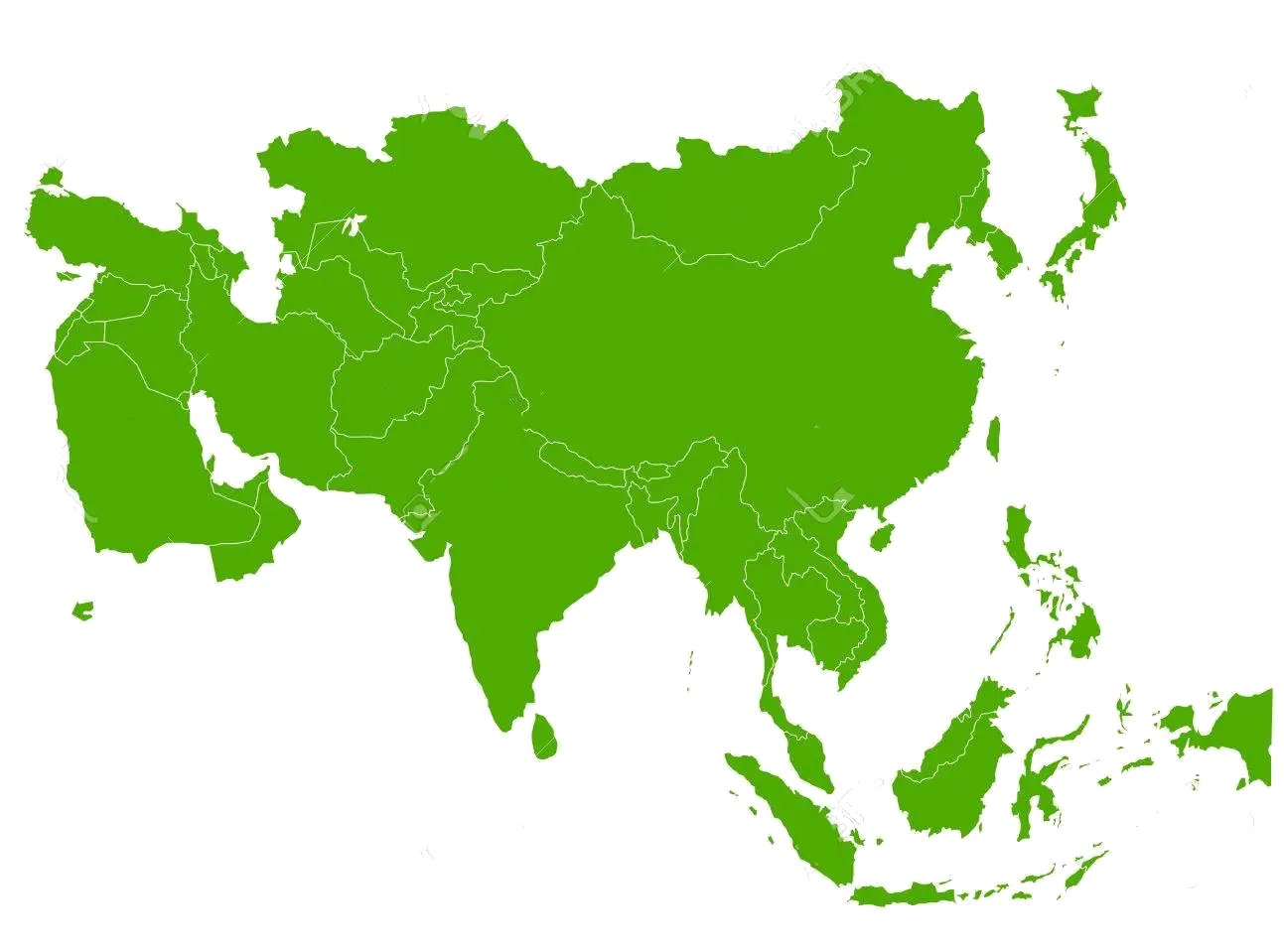 Staaten Asiens
Staaten Asiens
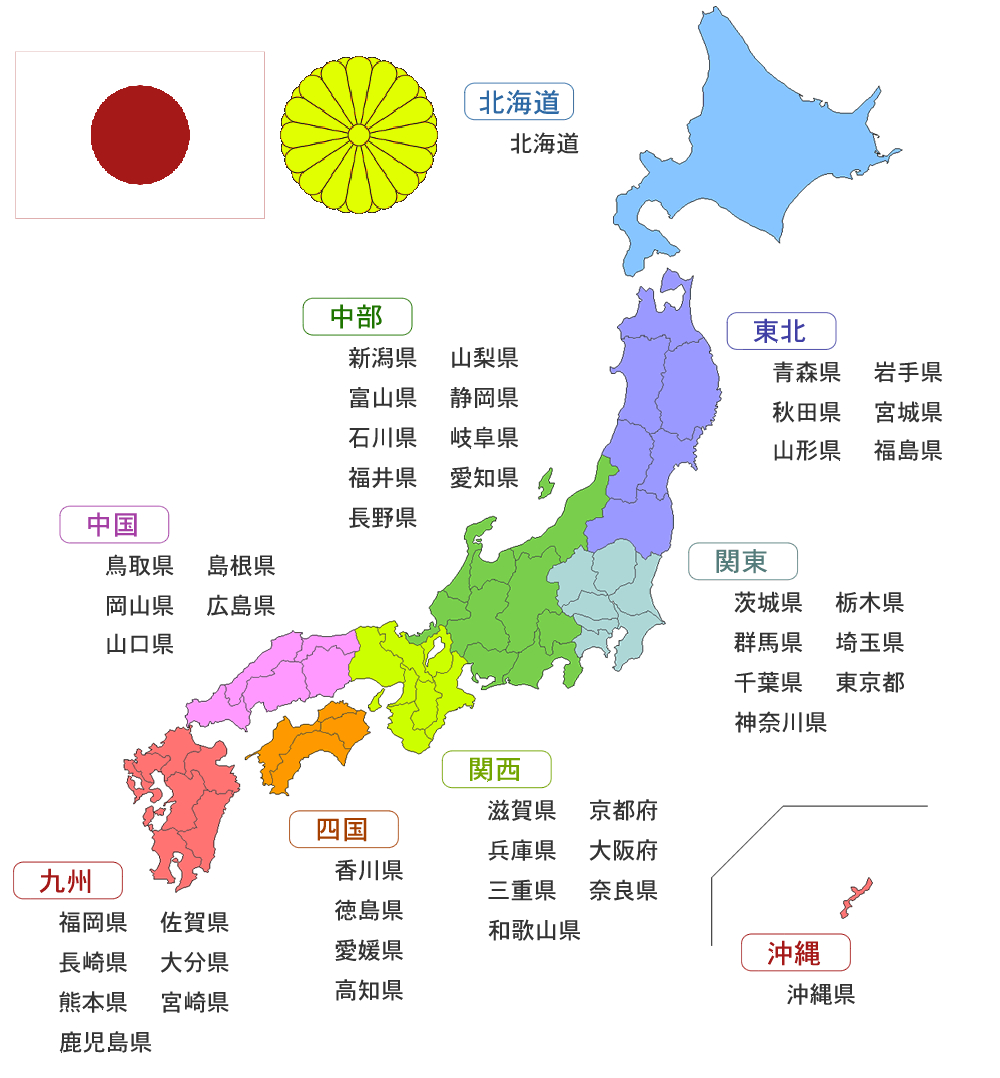
Japan (japanisch 日本, Nihon/Nippon; ) (amtlich: Staat Japan 日本国, Nihon-koku/Nippon-koku) ist ein 6852 Inseln umfassender ostasiatischer Staat im Pazifik, der indirekt im Norden an Russland, im Nordwesten an die Volksrepublik China, im Westen an Nordkorea und Südkorea und im Südwesten an die Republik China (Taiwan) grenzt und flächenmäßig der viertgrößte Inselstaat der Welt ist. De-facto-Hauptstadt und größte urbane Siedlung ist Tokio.
Die Bildung des japanischen Staatswesens begann im 5. Jahrhundert unter kulturellem Einfluss des chinesischen Kaiserreichs. Seit dem 16. Jahrhundert stand Japan im Kontakt mit dem Westen und stieg seit dem 19. Jahrhundert zur Großmacht auf, erwarb Kolonien wie Korea und Taiwan, nahm an beiden Weltkriegen teil und beherrschte kurzzeitig große Teile Südost- und Ostasiens. Das Japanische Kaiserreich war bis 1947 eine nach dem monarchischen Prinzip ausgerichtete, zum Teil an preußischem Vorbild angelehnte, konstitutionelle Monarchie mit dem japanischen Kaiser als Staatsoberhaupt. Damit zählte Japan zu einem der weltweit letzten Kaiserreiche. Seine aggressive Expansionspolitik in China im Vorfeld und während des Zweiten Weltkrieges (Pazifikkrieg) führte schließlich zur Niederlage an der Seite der Achsenmächte im August 1945. Im unter Douglas MacArthurs Besatzungsregierung gestalteten japanischen Staat seit 1947 ist der Souverän das Volk, höchstes Organ der Staatsgewalt das Parlament, dessen Kammern seither beide direkt vom Volk gewählt werden. Das Kaisertum wurde nicht abgeschafft, aber der Kaiser als „Symbol des Staates“ auf zeremonielle Aufgaben ohne eigenständige Autorität in Staatsangelegenheiten reduziert.
Japan wird zu den dichter besiedelten Ländern Asiens gezählt und liegt mit 127 Millionen Einwohnern auf Platz elf der bevölkerungsreichsten Länder der Erde. Die japanische Bevölkerung konzentriert sich überwiegend auf die vier Hauptinseln und besteht zu 99 % aus Japanern. Zu den Minderheiten gehören Koreaner, Chinesen und Filipinos. Seit den 2000er Jahren leben in Japan auch mehrere Tausend Gastarbeiter und Asylbewerber aus Afrika und anderen asiatischen Ländern. Die meisten Einwohner sind Anhänger des Shintoismus und Buddhismus.
Als historisch erste Industrienation Asiens hat Japan heute eine sehr hoch entwickelte Volkswirtschaft und war viele Jahre lang die weltweit zweitgrößte Wirtschaftskraft der Welt hinter den Vereinigten Staaten, mit denen es militärisch seit 1952 verbündet ist. Japan ist Mitglied der Gruppe der Sieben größten Industrienationen der Welt und der OECD. Japan nimmt in der Rangfolge gemäß dem Index der menschlichen Entwicklung der Vereinten Nationen den 17. Platz der 187 vom Index berücksichtigten Mitgliedstaaten der Vereinten Nationen ein.
日本国(日语:日本国/にっぽんこく、にほんこく Nippon-koku, Nihon-koku */?),通称日本,是位于东亚的岛屿国家,由日本列岛、琉球群岛和伊豆-小笠原群岛等6,852个岛屿组成[10],面积约37.8万平方公里[11]。国土全境被太平洋及鄂霍次克海、日本海、东海等缘海环抱,西邻朝鲜半岛及俄属远东,东北接千岛群岛,西南面台湾及中国大陆东部。人口达1.26亿[6],居于世界各国第11位,当中逾3,500万人居住于首都东京及周边数县构成的首都圈,为世界最大的都市圈[12]。政体施行议会制君主立宪制,君主天皇为国家与国民的象征,实际的政治权力则由国会、以及内阁总理大臣(首相)所领导的内阁掌管[13]。
传说日本于公元前660年2月11日建国[14],在公元4世纪出现首个统一政权,并于大化改新中确立了天皇的中央集权体制,文化上则深受中国隋唐两代之影响。12世纪后的六百年间,日本由幕府等数个武士阶级政权实际统治,期间包括了政治纷乱的南北朝与战国时代。17世纪起江户幕府颁布锁国令,至1854年被黑船迫以开港才结束。此后,日本在西方列强进逼的时局下,首先天皇从幕府手中收回政治实权,接着在19世纪中期的明治维新进行大规模政治与经济改革,引入欧洲的科学与技艺,日本的社会于是实现了工业化及现代化,施行天皇专权的君主立宪制,将北海道正式纳为领土;而自19世纪末起,日本开始进行对外扩张,首先并吞琉球,之后将台湾、朝鲜、库页岛等地纳为殖民地。进入20世纪时,日本已成为当时各国承认的帝国主义列强之一,也是当时东方世界唯一的大国。日本后来成为第二次世界大战的轴心国之一,但最终于1945年投降。败战后,日本在盟军主导下转型为以国会为中心的民主政体,天皇地位虚位化[13],同时依据新宪法放弃发动战争的权利,仅维持防御性的武装力量。
日本是世界第三大经济体,亦为七国集团成员,是世界先进国家之一,主要奠基于日本经济在二战后的巨幅增长。现时日本的科研能力、工业基础和制造业技术均位居世界前茅[15],并是世界第4大出口国和进口国[16]。2018年,日本的人均国内生产总值依国际汇率可兑换成为四万零八百美元,人均国民收入则在四万四千四百美元左右,人类发展指数亦在最高组群行列[17]。
日本国(にほんこく、にっぽんこく)、または日本(にほん、にっぽん)は、東アジアに位置する日本列島(北海道・本州・四国・九州の主要四島およびそれに付随する島々)及び、南西諸島・伊豆諸島・小笠原諸島などから成る島国[1][2]。議会制民主主義国家である。首都は東京都。 「日本」という漢字による国号の表記は、日本列島が中国大陸から見て東の果て、つまり「日の本(ひのもと)」に位置することに由来するのではないかとされる[3]。近代の二つの憲法の表題は、「日本国憲法」および「大日本帝国憲法」であるが、国号を「日本国」または「日本」と直接かつ明確に規定した法令は存在しない。[疑問点]ただし、日本工業規格 (Japanese Industrial Standard) では日本国、英語表記をJapanと規定。更に、国際規格 (ISO) では3文字略号をJPN、2文字略号をJPと規定している。また、日本国外務省から発給される旅券の表紙には「日本国」の表記と十六一重表菊[4] を提示している。法令で日本を指し示す表記には統一されておらず日本、日本国、本邦、わが国、などが混在している。
日本では、大和政権が統一以降に自国を「ヤマト」と称していたようであるが、古くから中国や朝鮮は日本を「倭」と呼んできた。石上神宮の七支刀の銘や、中国の歴史書(『前漢書』『三国志』『後漢書』『宋書』『隋書』など)や、高句麗の広開土王の碑文も、すべて倭、倭国、倭人、倭王、倭賊などと記している。そこで大和の代表者も、外交時には(5世紀の「倭の五王」のように)国書に「倭国王」と記すようになった[46]。
しかし中国との国交が約120年に渡って中絶した後、7世紀初期に再開された時には、『日本書紀』では「東の天皇が敬いて西の皇帝に白す」、『隋書』には「日出ずる処の天子、書を日没する処の天子に致す。恙無しや」とする国書を日本側が渡した記述があり、従来のように倭と称する事を避けている。中国側では『旧唐書』の「東夷伝」に初めて日本の名称が登場し、「日本国は倭国の別種なり。其の国、日の辺に在るを以ての故に、日本を以て名と為す」「或いは曰く、倭国自ら其の名の雅ならざるを悪(にく)み、改めて日本と為す」「或いは曰く、日本は旧(もと)小国、倭国の地を併す」のように、倭が名称を日本に変えた理由を説明している[47]。また、『新唐書』においては「国日出ずる所に近し、以に名をなす」とあり、隋書の「日出処天子」と共通している。
この7世紀には、遣隋使に続いて遣唐使がしばしば派遣されているが、いつから「倭」に変えて「日本」を国号と変えたのかは明らかでない[48]。使者の毎回の交渉について詳しく記述している『日本書紀』も、8世紀に国号としての日本が確立した後の書物であり、原資料にあった可能性のある「倭」の字を、国号に関する限りすべて「日本」と改めている。それ以外の文献では、733年(天平5年)に書かれた『海外国記』の逸文で、664年(天智3年)に太宰府へ来た唐の使者に「日本鎮西筑紫大将軍牒」とある書を与えたというが、真偽は不明である。結局確かなのは『続日本紀』における記述であり、702年(大宝2年)に32年ぶりで唐を訪れた遣唐使は、唐側が「大倭国」の使者として扱ったのに対し、「日本国使」と主張したという。『旧唐書』の「東夷伝」の記事も、この日本側の説明に基づいているようである[49]。
Japan (Japanese: 日本; Nippon [ɲippoɴ] or Nihon [ɲihoɴ]; formally 日本国 ![]() Nippon-koku or Nihon-koku, lit. "State of Japan") is an island country in East Asia. Located in the Pacific Ocean, it lies off the eastern coast of the Asian continent and stretches from the Sea of Okhotsk in the north to the East China Sea and the Philippine Sea in the south.
Nippon-koku or Nihon-koku, lit. "State of Japan") is an island country in East Asia. Located in the Pacific Ocean, it lies off the eastern coast of the Asian continent and stretches from the Sea of Okhotsk in the north to the East China Sea and the Philippine Sea in the south.
The kanji that make up Japan's name mean "sun origin", and it is often called the "Land of the Rising Sun". Japan is a stratovolcanic archipelago consisting of about 6,852 islands. The four largest are Honshu, Hokkaido, Kyushu, and Shikoku, which make up about ninety-seven percent of Japan's land area and often are referred to as home islands. The country is divided into 47 prefectures in eight regions, with Hokkaido being the northernmost prefecture and Okinawa being the southernmost one. The population of 127 million is the world's tenth largest, of which 98.5% are ethnic Japanese. 90.7% of people live in cities, while 9.3% live in the countryside.[16] About 13.8 million people live in Tokyo,[17] the capital of Japan. The Greater Tokyo Area is the most populous metropolitan area in the world with over 38 million people.[18]
Archaeological research indicates that Japan was inhabited as early as the Upper Paleolithic period. The first written mention of Japan is in Chinese history texts from the 1st century AD. Influence from other regions, mainly China, followed by periods of isolation, particularly from Western Europe, has characterized Japan's history.
From the 12th century until 1868, Japan was ruled by successive feudal military shōguns who ruled in the name of the Emperor. Japan entered into a long period of isolation in the early 17th century, which was ended in 1853 when a United States fleet pressured Japan to open to the West. After nearly two decades of internal conflict and insurrection, the Imperial Court regained its political power in 1868 through the help of several clans from Chōshū and Satsuma – and the Empire of Japan was established. In the late 19th and early 20th centuries, victories in the First Sino-Japanese War, the Russo-Japanese War and World War I allowed Japan to expand its empire during a period of increasing militarism. The Second Sino-Japanese War of 1937 expanded into part of World War II in 1941, which came to an end in 1945 following the Japanese surrender. Since adopting its revised constitution on May 3, 1947, during the occupation led by SCAP, the sovereign state of Japan has maintained a unitary parliamentary constitutional monarchy with an Emperor and an elected legislature called the National Diet.
Japan is a member of the ASEAN Plus mechanism, UN, the OECD, the G7, the G8, and the G20, and is considered a great power.[19][20][21] Its economy is the world's third-largest by nominal GDP and the fourth-largest by purchasing power parity. It is also the world's fourth-largest exporter and fourth-largest importer.
Japan benefits from a highly skilled and educated workforce; it has among the world's largest proportion of citizens holding a tertiary education degree.[22] Although it has officially renounced its right to declare war, Japan maintains a modern military with the world's eighth-largest military budget,[23] used for self-defense and peacekeeping roles; it ranked as the world's fourth most-powerful military in 2015.[24] Japan is a highly developed country with a very high standard of living and Human Development Index. Its population enjoys the highest life expectancy and third lowest infant mortality rate in the world, but is experiencing issues due to an aging population and low birthrate. Japan is renowned for its historical and extensive cinema, influential music industry, anime, video gaming, rich cuisine and its major contributions to science and modern technology.[25][26]
Le Japon, en forme longue l’État du Japon, en japonais Nihon ou Nippon (日本) et Nihon-koku ou Nippon-koku (日本国) respectivement, est un pays insulaire de l’Asie de l’Est, situé entre l’océan Pacifique et la mer du Japon, à l’est de la Chine, de la Corée et de la Russie, et au nord de Taïwan. Étymologiquement, les kanjis (caractères chinois) qui composent le nom du Japon signifient « pays (国, kuni) d’origine (本, hon) du Soleil (日, ni) » ; c’est ainsi que le Japon est désigné comme le « pays du soleil levant ».
Le Japon forme, depuis 1945, un archipel de 6 852 îles de plus de 100 m2, dont les quatre plus grandes sont Hokkaidō, Honshū, Shikoku, et Kyūshū représentant à elles seules 95 % de la superficie terrestre du pays. L’archipel s’étend sur plus de trois mille kilomètres. La plupart des îles sont montagneuses, parfois volcaniques ; par exemple, le plus haut sommet du Japon, le mont Fuji (3 776 m), est un volcan (inactif depuis 1707). Le Japon est le douzième pays le plus peuplé du monde, avec environ 127 millions d’habitants pour 377 488 km2 (337 hab./km2), dont l'essentiel est concentré sur les étroites plaines littorales du sud d'Honshū et du nord de Shikoku et Kyūshū, formant un ensemble pratiquement urbanisé en continu appelé « Mégalopole japonaise » ou « Taiheiyō Belt » (太平洋ベルト, Taiheiyō beruto, littéralement « ceinture Pacifique »). Le Grand Tokyo, qui comprend la capitale Tokyo et plusieurs préfectures environnantes, est la plus grande région métropolitaine du monde, avec plus de 35 millions d’habitants. La ville a été première place financière mondiale en 1990.
Les recherches archéologiques démontrent que le Japon était peuplé dès la période du Paléolithique supérieur. Les premières mentions écrites du Japon sont de brèves apparitions dans des textes de l’histoire chinoise du Ier siècle. L’histoire du Japon est caractérisée par des périodes de grande influence dans le monde extérieur suivies par de longues périodes d’isolement. Depuis l’adoption de sa constitution en 1947, le Japon a maintenu une monarchie constitutionnelle avec un empereur et un parlement élu, la Diète.
Le Japon est la troisième puissance économique du monde pour le PIB nominal et la quatrième pour le PIB à parité de pouvoir d’achat. Il est aussi le quatrième pays exportateur et le sixième pays importateur au monde. Acteur majeur du commerce international et puissance épargnante, il a ainsi accumulé une position créancière nette vis-a-vis du reste du monde (en) de plus de 325 000 milliards de yens4, le plaçant en première position devant la Chine5. C’est un pays développé, avec un niveau de vie très élevé (dix-septième IDH le plus élevé) et la plus longue espérance de vie au monde selon les estimations de l’ONU6. Mais ce tableau idyllique ne doit pas masquer d’importants problèmes qui pèsent sur l’avenir du pays : le Japon souffre d’un des taux de natalité les plus bas du monde, très en dessous du seuil de renouvellement des générations7. Le pays est actuellement en déclin démographique8. C’est également le pays pour lequel le poids de la dette publique brute est le plus important au monde9, cette dernière s’élève en 2014 à 233 % du PIB10.
Il Giappone (AFI: [ʤapˈpoːne][6][7]; in giapponese 日本 Nihon? o Nippon?, ufficialmente 日本国 Nihon-koku? o Nippon-koku?) è uno Stato insulare dell'Asia orientale.
Situato nell'oceano Pacifico, il Giappone si trova a est del mar del Giappone, Cina, Corea del Nord, Corea del Sud e Russia. Si sviluppa nell'area compresa tra il mare di Ochotsk nel nord, fino al mar Cinese Orientale e Taiwan nel sud. Il Giappone è un arcipelago composto da 6.852 isole, le cui quattro isole più grandi sono: Honshū, Hokkaidō, Kyūshū e Shikoku (tutte e quattro collegate tramite ponti o tunnel sottomarini), che da sole rappresentano circa il 97% della superficie terrestre del Giappone. Molte isole sono montagne, alcune di origine vulcanica e la vetta più alta del Giappone è il Monte Fuji, un vulcano attivo.&

 Geographie
Geographie

 Geographie
Geographie
 ***IWF Entwickelte Länder
***IWF Entwickelte Länder

 Geschichte
Geschichte
 IWF entwickelte Länder
IWF entwickelte Länder
 IWF entwickelte Länder
IWF entwickelte Länder
 TOP4
TOP4
 Schweden
Schweden

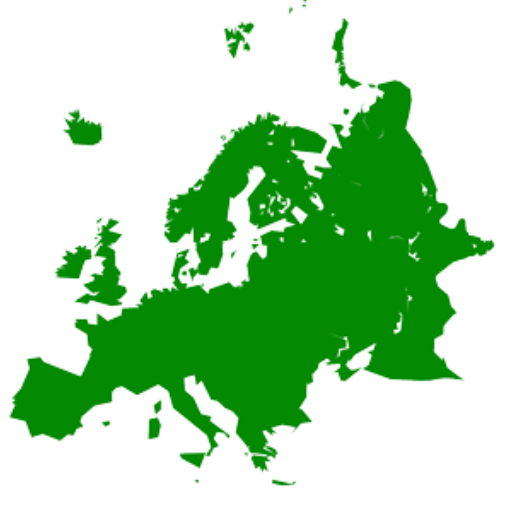 Staaten Europas
Staaten Europas
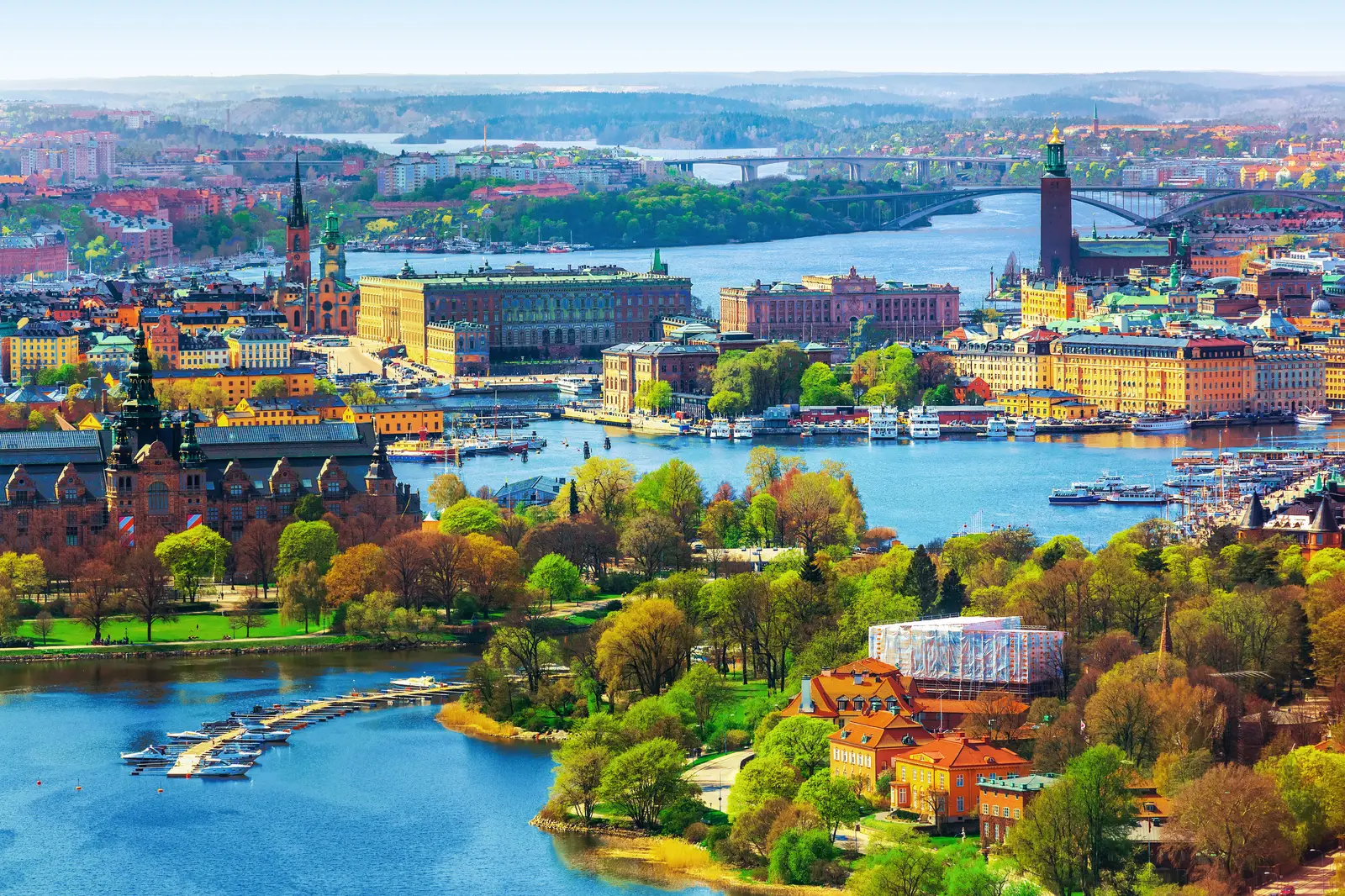
瑞典王国(瑞典语:Konungariket Sverige![]() 发音 帮助·信息),通称瑞典,是一个位于斯堪地纳维亚半岛的北欧国家,首都为斯德哥尔摩。西邻挪威,东北与芬兰接壤,西南濒临斯卡格拉克海峡和卡特加特海峡,东边为波罗的海与波的尼亚湾。即瑞典和与丹麦、德国、波兰、俄罗斯、立陶宛、拉脱维亚和爱沙尼亚隔海相望,于西南通过厄勒海峡大桥与丹麦相连。瑞典于1995年加入欧洲联盟。
发音 帮助·信息),通称瑞典,是一个位于斯堪地纳维亚半岛的北欧国家,首都为斯德哥尔摩。西邻挪威,东北与芬兰接壤,西南濒临斯卡格拉克海峡和卡特加特海峡,东边为波罗的海与波的尼亚湾。即瑞典和与丹麦、德国、波兰、俄罗斯、立陶宛、拉脱维亚和爱沙尼亚隔海相望,于西南通过厄勒海峡大桥与丹麦相连。瑞典于1995年加入欧洲联盟。
瑞典面积为449,964平方公里,为北欧第一大国家,人口约1000万[9][10]。64%的国土由森林覆盖,人口密度低,只有都会地区人口密度较高,84%的人口居住在只占国土面积1.3%的城市里[11]。瑞典是一个现代、自由与民主的高度发达国家,其公民享有高质的生活[12],政府亦非常注重环保[13][14]。
瑞典是传统的铁、铜和木材出口国,其水资源也很丰富,但是石油和煤矿十分匮乏。随着运输以及通讯的进步,这些自然资源也能够更大规模地从各地开采,尤其是木材与铁矿。经济自由与教育普及而让瑞典开始历经快速的工业化,并从1890年代开始发展制造业。20世纪中期,瑞典成为一个福利国家。
1397年,瑞典与丹麦和挪威一起组成了卡尔马联合(芬兰此时还是瑞典王国的一部分)。瑞典于16世纪初脱离卡尔马联合,并且与邻国进行了多年的战争,尤其是与俄罗斯以及从未完全承认瑞典已经离开了卡尔玛联合的丹麦-挪威联合。17世纪时瑞典借由战争扩张领土,成为了强权国家,其领土面积为目前的两倍之大。[15]1809年瑞典失去了芬兰,也不再具有强权地位。之后,瑞典参与了第六次反法同盟,在1814年瑞典入侵了挪威并逼迫对方签属《莫斯条约》,从此之后,瑞典没有再参与过战争。[16] 现今,瑞典被视为极力追求人权和平等的国家之一。瑞典二战后设立福利国家社会福利的制度,并在联合国开发计划署的人类发展指数中通常名列前茅。
Das Königreich Schweden (schwedisch Konungariket Sverige oder einfach Sverige ) ist eine parlamentarische Monarchie in Nordeuropa. Das Staatsgebiet umfasst den östlichen Teil der Skandinavischen Halbinsel und die Inseln Gotland und Öland. Schweden ist Mitglied des Nordischen Rates und seit 1995 der Europäischen Union. Anders als Norwegen und Dänemark ist es jedoch nicht Mitglied der NATO und militärisch bündnisfrei.
スウェーデン王国(スウェーデンおうこく、スウェーデン語: ![]() Konungariket Sverige)、通称スウェーデンは、北ヨーロッパのスカンディナヴィア半島に位置する立憲君主制国家。首都はストックホルム。西にノルウェー、北東にフィンランドと国境を接し、南西にカテガット海峡を挟んでデンマークと近接する。東から南にはバルト海があり、対岸のロシアやドイツとの関わりが深い。法定最低賃金は存在せず[3]、経済はスウェーデン国外の大企業や機関投資家に左右される傾向にある。
Konungariket Sverige)、通称スウェーデンは、北ヨーロッパのスカンディナヴィア半島に位置する立憲君主制国家。首都はストックホルム。西にノルウェー、北東にフィンランドと国境を接し、南西にカテガット海峡を挟んでデンマークと近接する。東から南にはバルト海があり、対岸のロシアやドイツとの関わりが深い。法定最低賃金は存在せず[3]、経済はスウェーデン国外の大企業や機関投資家に左右される傾向にある。
Sweden (/swiːdən/; Swedish: Sverige [ˈsværjɛ] (![]() listen)), officially the Kingdom of Sweden (Swedish:
listen)), officially the Kingdom of Sweden (Swedish: ![]() Konungariket Sverige (help·info)), is a Scandinavian Nordic country in Northern Europe. It borders Norway to the west and north and Finland to the east, and is connected to Denmark in the southwest by a bridge-tunnel across the Öresund, a strait at the Swedish-Danish border. At 450,295 square kilometres (173,860 sq mi), Sweden is the largest country in Northern Europe, the third-largest country in the European Union and the fifth largest country in Europe by area. Sweden has a total population of 10.2 million[3] of which 2.4 million has a foreign background.[12] It has a low population density of 22 inhabitants per square kilometre (57/sq mi). The highest concentration is in the southern half of the country.
Konungariket Sverige (help·info)), is a Scandinavian Nordic country in Northern Europe. It borders Norway to the west and north and Finland to the east, and is connected to Denmark in the southwest by a bridge-tunnel across the Öresund, a strait at the Swedish-Danish border. At 450,295 square kilometres (173,860 sq mi), Sweden is the largest country in Northern Europe, the third-largest country in the European Union and the fifth largest country in Europe by area. Sweden has a total population of 10.2 million[3] of which 2.4 million has a foreign background.[12] It has a low population density of 22 inhabitants per square kilometre (57/sq mi). The highest concentration is in the southern half of the country.
Germanic peoples have inhabited Sweden since prehistoric times, emerging into history as the Geats (Swedish Götar) and Swedes (Svear) and constituting the sea peoples known as the Norsemen. Southern Sweden is predominantly agricultural, while the north is heavily forested. Sweden is part of the geographical area of Fennoscandia. The climate is in general very mild for its northerly latitude due to significant maritime influence, that in spite of this still retains warm continental summers. Today, the sovereign state of Sweden is a constitutional monarchy and parliamentary democracy, with a monarch as head of state, like its neighbour Norway. The capital city is Stockholm, which is also the most populous city in the country. Legislative power is vested in the 349-member unicameral Riksdag. Executive power is exercised by the government chaired by the prime minister. Sweden is a unitary state, currently divided into 21 counties and 290 municipalities.
An independent Swedish state emerged during the early 12th century. After the Black Death in the middle of the 14th century killed about a third of the Scandinavian population,[13][14] the Hanseatic League threatened Scandinavia's culture, finances and languages.[dubious ] This led to the forming of the Scandinavian Kalmar Union in 1397,[15] which Sweden left in 1523. When Sweden became involved in the Thirty Years War on the Reformist side, an expansion of its territories began and eventually the Swedish Empire was formed. This became one of the great powers of Europe until the early 18th century. Swedish territories outside the Scandinavian Peninsula were gradually lost during the 18th and 19th centuries, ending with the annexation of present-day Finland by Russia in 1809. The last war in which Sweden was directly involved was in 1814, when Norway was militarily forced into personal union. Since then, Sweden has been at peace, maintaining an official policy of neutrality in foreign affairs.[16] The union with Norway was peacefully dissolved in 1905. Sweden was formally neutral through both world wars and the Cold War, albeit Sweden has since 2009 openly moved towards cooperation with NATO.
After the end of the Cold War, Sweden joined the European Union on 1 January 1995, but declined NATO membership, as well as Eurozone membership following a referendum. It is also a member of the United Nations, the Nordic Council, the Council of Europe, the World Trade Organization and the Organisation for Economic Co-operation and Development (OECD). Sweden maintains a Nordic social welfare system that provides universal health care and tertiary education for its citizens. It has the world's eleventh-highest per capita income and ranks highly in numerous metrics of national performance, including quality of life, health, education, protection of civil liberties, economic competitiveness, equality, prosperity and human development.[17][18][19]
La Suède (en suédois : Sverige /ˈsvæː.rjə/) – en forme longue le royaume de Suède (en suédois : Konungariket Sverige /koː.nɵŋ.a.ˈriː.kət ˈsvæː.rjə/ Écouter) – est un pays d'Europe du Nord situé en Scandinavie. Sa capitale est Stockholm et ses habitants sont appelés Suédois. Sa langue officielle et langue majoritaire est le suédois. Le finnois et le sami sont aussi parlés, principalement dans le nord du pays. Les variations régionales sont fréquentes.
La Suède a une frontière avec la Norvège à l'ouest et une autre avec la Finlande au nord-est. Au sud, la Suède est séparée du Danemark par l'Øresund, un détroit dont la section la plus étroite mesure 4 km de large. Le nord de la Suède est occupé par la Laponie, appelée Sápmi par ses habitants, les Samis, qui furent les premiers habitants du nord de la Scandinavie.
Avec un territoire d'une superficie de 449 964 km2, la Suède est le cinquième plus grand pays d'Europe après la Russie, l'Ukraine, la France et l'Espagne. La Suède possède une faible densité de population, sauf dans les zones métropolitaines. Le taux d'urbanisation est de 84 % alors que les villes n'occupent qu'1,3 % du territoire. La sauvegarde de l'environnement et l'enjeu des énergies renouvelables sont généralement la priorité des hommes politiques, ainsi que d'une grande partie de la population. En 2014, le 'Global Green Economy Index' classe la Suède premier pays le plus écologique au monde2.
La Suède est depuis longtemps un grand exportateur de fer, de cuivre et de bois. L'industrialisation, qui a commencé dans les années 1890, a permis à la Suède de se développer, et d'obtenir constamment de nos jours une bonne place dans les classements européens sur l'Indice de développement humain (IDH). La Suède possède de grandes réserves d'eau potable, mais manque de ressources énergétiques fossiles comme le charbon ou le pétrole.
La Suède moderne est issue de l'Union de Kalmar, créée en 1397. Le pays fut unifié au XVIe siècle par le roi Gustav Vasa. Au XVIIe siècle, la Suède conquiert de nouveaux territoires et forme un empire colonial. Cependant, la majeure partie de ces territoires devra être abandonnée au XVIIIe siècle. Au début du XIXe siècle, la Finlande et d'autres territoires sont perdus. Après sa dernière guerre en 1814, la Suède connaît la paix, adoptant une politique de non-alignement en temps de paix et de neutralité en temps de guerre. La Suède fait partie de l'Union européenne depuis 1995, mais pas de la zone euro.
Selon l'indice de démocratie du groupe de presse britannique The Economist Group, la Suède est un des pays les plus démocratiques au monde (premier en 2008, troisième en 2017 derrière la Norvège et l'Islande). De plus, le 31 décembre 2010, elle reçoit le prix de l'Excellence 2010 (pays le mieux réputé).
La Svezia (AFI: /ˈzvɛtsːja/[6]; in svedese: Sverige, /ˈsvæːɾ(i)jə/ ), ufficialmente chiamata Regno di Svezia (in svedese: Konungariket Sverige), è uno Stato dell'Unione Europea, situato nella penisola scandinava.
Confina con la Norvegia a ovest e con la Finlandia a nord-est; è bagnata dal Mar Baltico e dal Golfo di Botnia a est, e dagli stretti dello Skagerrak e del Kattegat a sud-ovest; lo stretto dell'Øresund, che separa la Svezia dalla Danimarca, è dal 2000 attraversato dal ponte omonimo che collega i due Paesi rispettivamente tra Malmö e Copenaghen.
Con i suoi 449 964 km² di superficie la Svezia è il quinto Stato più esteso d'Europa dopo Russia, Ucraina, Francia e Spagna, nonché il terzo dell'Unione. Si estende per una lunghezza di oltre 1.500 chilometri in linea d'aria da nord a sud. La densità della popolazione è bassa e tende a concentrarsi nelle città principali. Il territorio interno è per buona parte occupato da foreste. Lo Stato è ricco di risorse naturali (legname, ferro, acqua) e l'economia svedese permette alla popolazione di godere di uno fra i più elevati tenori di vita al mondo[7][8]: la Svezia è saldamente ai primi posti[9] nelle classifiche dell'ONU sullo sviluppo umano.
La Svezia è una monarchia parlamentare il cui sovrano è, dal 1973, Carlo XVI Gustavo, il primo ministro è Stefan Löfven. Lo svedese è lingua ufficiale dal 1º luglio 2009. L'ingresso nell'Unione europea avvenne il 1º gennaio 1995.
Fino al XIX secolo la Svezia era, invece, uno degli Stati più poveri d'Europa[10][11]. In seguito, lo sviluppo dei trasporti permise un intenso sfruttamento delle sue risorse naturali (legname e ferro), fattore che portò a un vigoroso sviluppo. Un elevato livello di istruzione e le liberalizzazioni economiche contribuirono, alla fine dell'Ottocento, all'affermarsi di un'avanzata industria manifatturiera. I primi decenni del XX secolo furono caratterizzati dall'affermarsi dello stato sociale, che rimane tra i più efficienti al mondo[12][13][14].
Suecia (en sueco: ![]() Sverige (?·i) [ˈsværjɛ]), oficialmente Reino de Suecia (en sueco:
Sverige (?·i) [ˈsværjɛ]), oficialmente Reino de Suecia (en sueco: ![]() Konungariket Sverige (?·i)), es un país escandinavo de Europa del Norte que forma parte de la Unión Europea (UE). Limita al norte con Noruega y Finlandia, al este con Finlandia y el golfo de Botnia, al sur con el mar Báltico y al oeste con el mar del Norte y Noruega. Tiene fronteras terrestres con Noruega y Finlandia, y está conectado a Dinamarca por el puente de Öresund. Su ciudad más poblada es Estocolmo,5 que es también su capital.
Konungariket Sverige (?·i)), es un país escandinavo de Europa del Norte que forma parte de la Unión Europea (UE). Limita al norte con Noruega y Finlandia, al este con Finlandia y el golfo de Botnia, al sur con el mar Báltico y al oeste con el mar del Norte y Noruega. Tiene fronteras terrestres con Noruega y Finlandia, y está conectado a Dinamarca por el puente de Öresund. Su ciudad más poblada es Estocolmo,5 que es también su capital.
Con una extensión de 450 295 km²,1 es el quinto país más extenso de Europa. En 2016, contaba con una población total de poco más de 10 millones de personas, de las cuales el 98 % cuenta con acceso a Internet, lo que lo convierte en el país con la mayor penetración del servicio en el mundo. Tiene una densidad de población de solo 22 h/km², similar a otros países de su entorno. Cerca del 84 % de la población vive en zonas urbanas.6 Los suecos disfrutan de un alto nivel de vida, con una organización y cultura corporativa no jerárquica, y colectivista en comparación con sus homólogos anglosajones.7 La conservación de la naturaleza, la protección del medio ambiente y la eficacia energética son, por lo general, una prioridad en la formulación de políticas y cuentan con acogida por gran parte del pueblo.89. Mantiene el modelo nórdico de bienestar que brinda asistencia sanitaria universal y educación terciaria gratuita a sus ciudadanos, tiene el undécimo ingreso per cápita más alto del mundo y ocupa un lugar destacado en numerosas mediciones de desarrollo humano, incluida la calidad de vida, salud, educación, igualdad, y prosperidad.10
Durante mucho tiempo fue un importante exportador de hierro, cobre y madera. La mejora de los transportes y las comunicaciones ha permitido la explotación a gran escala de bienes naturales, sobre todo la madera y el mineral de hierro. En la década de 1980, la escolarización universal y la industrialización permitieron al país desarrollar una exitosa industria manufacturera. Tiene una rica oferta de energía hidráulica, pero carece de petróleo y de yacimientos de carbón importantes. En el siglo XX se ubicó constantemente entre los países con mejor Índice de Desarrollo Humano (IDH), actualmente ocupando la séptima posición.
La Suecia moderna surgió de la Unión de Kalmar en 1397, y de la unificación del país por el rey Gustavo Vasa en el siglo XVI. En el siglo XVII, amplió sus territorios para formar el Imperio sueco. La mayor parte de los territorios conquistados fuera de la península escandinava se perdieron durante los siguientes siglos. La mitad oriental de Suecia constituida por la mitad oriental de Norrland y Österland se perdió frente a Rusia en 1809. Desde 1814, no ha participado en ningún conflicto, manteniendo una política exterior de paz y neutralidad en tiempo de guerra.11
Шве́ция (швед. Sverige ), официальное название — Короле́вство Шве́ция (швед. Konungariket Sverige ) — государство в Северной Европе на Скандинавском полуострове.
Территория составляет 447 435 км², а население — более 10 миллионов человек — по этим показателям является крупнейшим скандинавским государством. Среди государств Европы занимает 5-е место по территории.

 Geographie
Geographie

 Geographie
Geographie
 ***IWF Entwickelte Länder
***IWF Entwickelte Länder
 IWF entwickelte Länder
IWF entwickelte Länder
 IWF entwickelte Länder
IWF entwickelte Länder
 TOP4
TOP4
 Schweiz
Schweiz

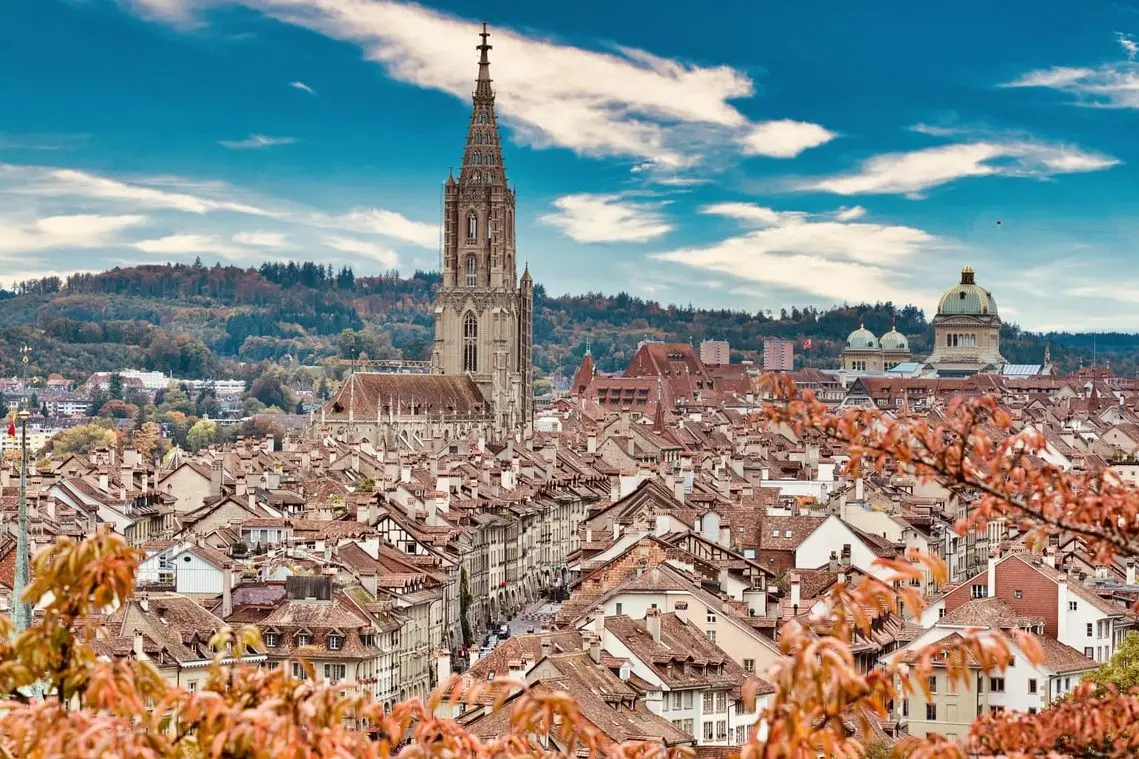
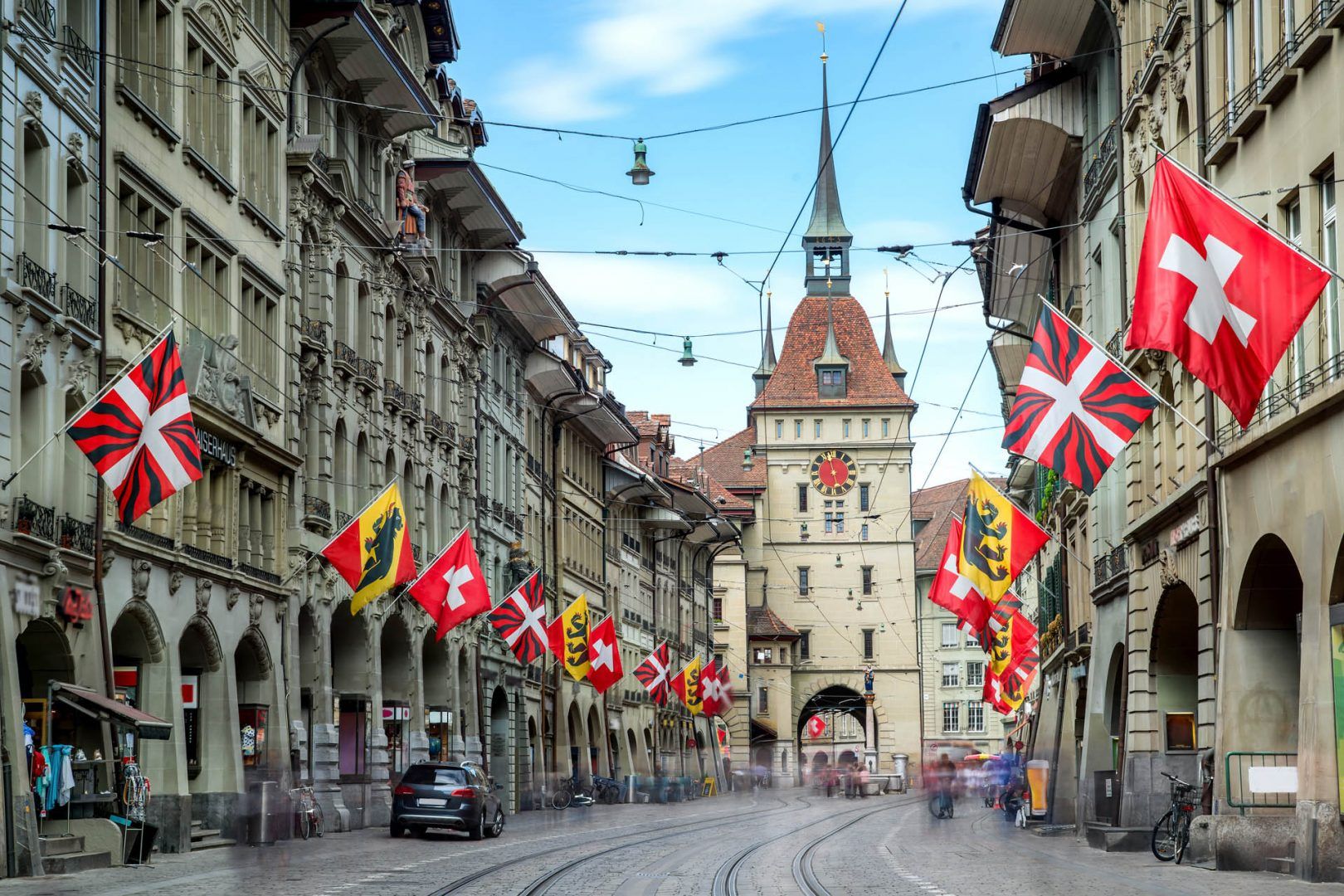
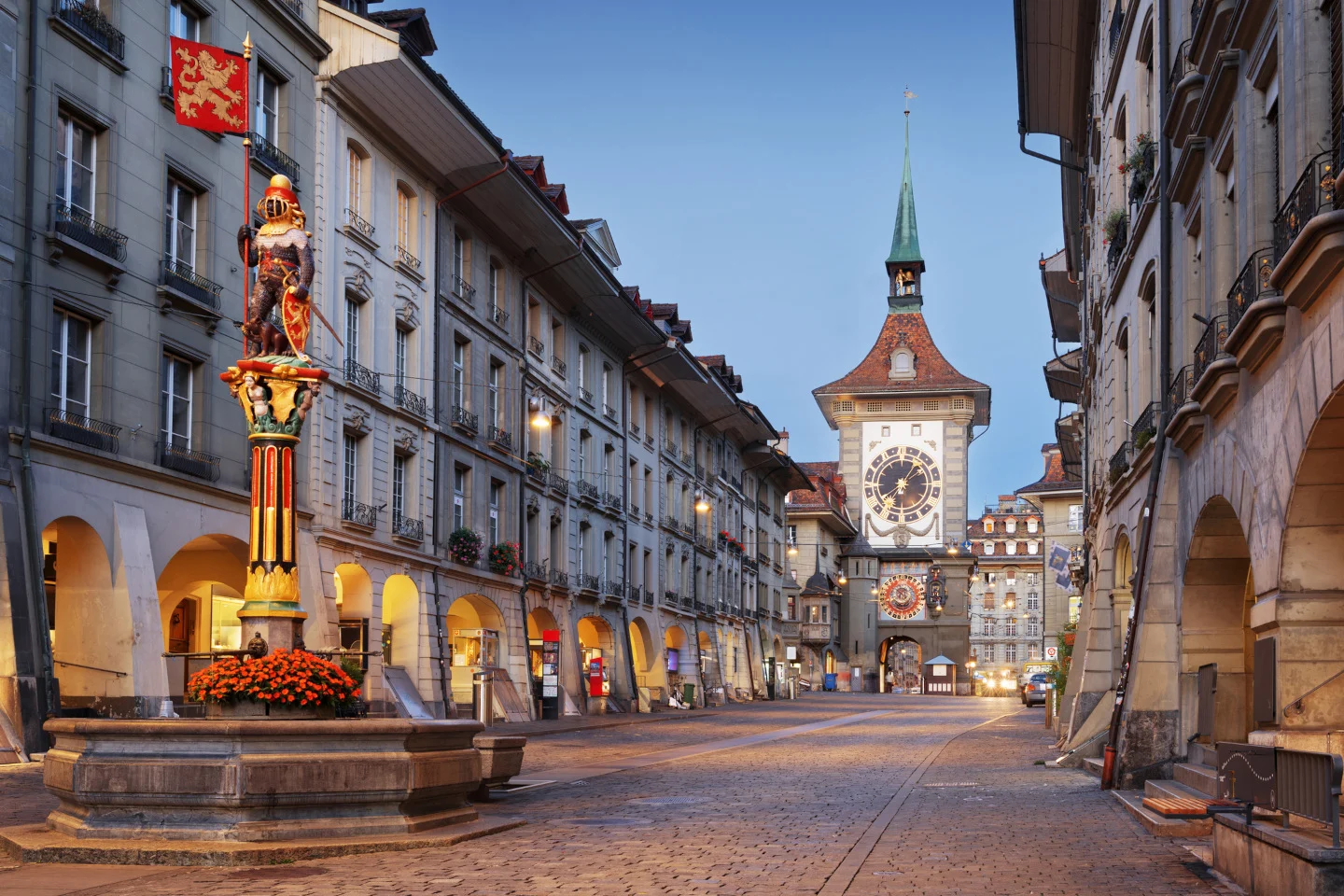
Amtssprache Deutsch, Französisch, Italienisch, Rätoromanisch Hauptstadt Bern Fläche 41'291 km² Einwohnerzahl 8'815'385 Währung Schweizer Franken (Fr., CHF) Errichtung 1. August 1291 nach Legende als «Ewiger Bund» (Rütlischwur), 12. September 1848 als moderner Bundesstaat in der heutigen Form Unabhängigkeit 1499 faktische Ablösung vom Heiligen Römischen Reich im Frieden zu Basel, 1648 juristische Trennung vom Heiligen Römischen Reich im Westfälischen Frieden, 1798–1813 französischer Vasallenstaat zur Zeit von Helvetik und Mediation Nationalhymne Schweizerpsalm Nationalhymne Schweizerpsalm Nationalfeiertag 1. August Kfz-Kennzeichen CH ISO 3166 CH, CHE, 756 Internet-TLD .ch, .swiss Telefonvorwahl +41
Die Schweiz (schweizerdeutsch Schwiz, französisch Suisse [sɥis(ə)], italienisch Svizzera [ˈzvitːsera], rätoromanisch Svizraⓘ/? [ˈʒviːtsrɐ] oder [ˈʒviːtsʁɐ], lateinisch Helvetia), amtlich Schweizerische Eidgenossenschaft (schweizerdeutsch Schwizerischi Eidgnosseschaft, französisch Confédération suisse, italienisch Confederazione Svizzera, rätoromanisch Confederaziun svizraⓘ/?, lateinisch Confoederatio Helvetica), ist ein föderalistischer, demokratischer Staat in Mitteleuropa. Er grenzt im Norden an Deutschland, im Osten an Österreich und Liechtenstein, im Süden an Italien und im Westen an Frankreich.
In der Schweiz leben 8,96 Millionen Menschen[10] auf knapp 41'300 Quadratkilometern. Der Staat gehört damit zu den dichter besiedelten Staaten Europas, wobei sich die Bevölkerung im Mittelland, der Beckenzone zwischen Jura und Alpen, sowie im südlichen Tessin konzentriert. Die acht grössten Städte bzw. Wirtschaftszentren sind Zürich, Genf, Basel, Lausanne, Bern, Winterthur, Luzern und St. Gallen.
Der Staat hat Anteil an drei grossen Sprachräumen: dem deutschen in der Deutschschweiz, dem französischen in der Romandie (Suisse romande, Westschweiz, Welschschweiz) und dem italienischen in der italienischen Schweiz; als viertes Sprachgebiet tritt das Rätoromanische hinzu (in Teilen des Kantons Graubünden). Deutsch, Französisch, Italienisch und Rätoromanisch sind die offiziellen Landessprachen der Schweiz, die drei erstgenannten sind die offiziellen Amtssprachen des Bundes.[11] Um keine einzelne zu bevorzugen, lautet das Landeskennzeichen «CH», die Abkürzung der lateinischen Bezeichnung Confoederatio Helvetica.
Die Schweizerische Eidgenossenschaft ist ein Bundesstaat, der aus 26 teilsouveränen Kantonen besteht. Sitz der Regierung und des Parlaments ist die Bundesstadt Bern. Die Schweiz gilt als Willensnation; nationale Identität und der Zusammenhalt der Bürger basieren nicht auf einer gemeinsamen Sprache, ethnischen Herkunft oder Religion, sondern auf interkulturellen Faktoren wie dem Glauben an die direkte Demokratie, einem hohen Mass an lokaler und regionaler Autonomie sowie einer ausgeprägten Kultur der Kompromissbereitschaft bei der politischen Entscheidungsfindung. Für das Selbstverständnis grundlegend ist überdies die dauernde Neutralität.
Die Schweizerische Eidgenossenschaft ging aus den sogenannten Urkantonen Uri, Schwyz und Unterwalden hervor. Ihr Name leitet sich vom Kanton Schwyz bzw. von dessen gleichnamigem Hauptort her. Als inoffizielles und mythologisiertes Gründungsdokument gilt der Bundesbrief von 1291, die älteste erhaltene Bündnisurkunde. Mit dem Frieden zu Basel wurde die Schweiz 1499 faktisch aus dem Verband des Heiligen Römischen Reichs herausgelöst. Staatsrechtlich wurde ihre Unabhängigkeit im Westfälischen Frieden von 1648 anerkannt. Unter dem Einfluss des revolutionären Frankreich entstand 1798 die kurzlebige, zentralstaatlich verfasste Helvetische Republik. Nach deren Ende 1803 wurde die Eidgenossenschaft wiederhergestellt, blieb jedoch bis 1813 ein französischer Vasallenstaat. Infolge des Sonderbundskriegs entstand 1848 der heutige Bundesstaat.
Das Entwicklungsprogramm der Vereinten Nationen zählt die Schweiz zu den Ländern mit sehr hoher menschlicher Entwicklung mit dem weltweit höchsten Wert des Index der menschlichen Entwicklung für das Jahr 2021.[8] Obwohl sie nach der Staatsgrösse nur den 133. Rang belegt und nach der Anzahl der Einwohner den 98. Rang,[12] hält sie den 20. Rang der grössten Volkswirtschaften der Erde.
瑞士联邦[注 3](德语:Schweizerische Eidgenossenschaft;法语:Confédération suisse;意大利语:Confederazione Svizzera;罗曼什语:Confederaziun svizra;拉丁语:Confœderatio Helvetica[注 4]),通称瑞士(德语:Schweiz[注 5];法语:Suisse;意大利语:Svizzera;罗曼什语:Svizra;拉丁语:Helvetia),为中欧国家[注 6],由26个州组成[注 7]。瑞士为典型的分权自治型联邦委员会制国家,组成联邦的各州拥有广泛的地方自治权力,而且瑞士的国家元首为瑞士联邦委员会全体成员,并非联邦主席或其他特定的人。伯尔尼是联邦政府所在地兼事实上的首都,日内瓦、苏黎世也是该国的重要城市,并且是多个国际组织的总部驻地。瑞士北靠德国,西邻法国,南接意大利,东临奥地利和列支敦士登。
瑞士是一个内陆国家,在地理上被划分成阿尔卑斯山、瑞士高原及汝拉山脉三部分,其山地总面积达41,285平方公里,当中以阿尔卑斯山最为广阔。瑞士高原不仅是瑞士800万人口的集中区域,也是该国主要城市日内瓦及经济中心苏黎世的所在地。瑞士的自然风光及气候条件十分优越,因而素有“世界公园”[14]:162[10]:1[15]:307或“世界花园”[16]:180之美誉。
瑞士的中立政策开始于1815年,由当年的《巴黎条约》上提出,并在同年的维也纳会议上为各国所承认[17][18]。瑞士曾经存在雇佣兵制度,后因确立“永久中立国”地位而改为采用武装中立,自1815年维也纳会议后从未再卷入过国际战争。瑞士自2002年起才成为联合国正式会员国[注 8],但瑞士实行积极外交政策且频繁参与世界各地的重建和平活动[20];瑞士为红十字国际委员会的发源地且为许多国际性组织总部所在地,如联合国日内瓦办事处。在欧洲区域组织方面,瑞士仅为欧洲自由贸易联盟创始国及申根区会员国,而非欧盟与欧洲经济区成员。依照人均国民生产总值,瑞士是世界富裕国家,同时瑞士人均财富也居(除摩纳哥之外的)世界首位[注 9][21][22]。依国际汇率计算,瑞士为世界第19大经济体;以购买力平价计算则为世界第39大经济体;出口额及进口额分别居世界第15位及第17位。瑞士由3个主要语言及文化区所组成,分别为德语区、法语区及意大利语区,而后加入了罗曼什语区。虽然瑞士人中德语人口居多数,但瑞士并未形成单一民族及语言的国家,而且其国民中外国出生的比例相当高。对国家强烈的归属感则来自于共同的历史背景及价值观,例如:联邦主义及直接民主制等[23]。瑞士将自身以意志民族路径完成的民族建构视作一种关键的独特性[24][25]。传统上以瑞士永久同盟于1291年8月初缔结来作为建国之初始,因而每年的8月1日被立为瑞士国庆日。
 *Mittelmeer
*Mittelmeer
 Commonwealth of Nations
Commonwealth of Nations

 Geographie
Geographie

 Geographie
Geographie
 ***IWF Entwickelte Länder
***IWF Entwickelte Länder
 IWF entwickelte Länder
IWF entwickelte Länder
 IWF entwickelte Länder
IWF entwickelte Länder
 TOP6
TOP6

 Staaten Asiens
Staaten Asiens

 Staaten Europas
Staaten Europas
 Zypern
Zypern
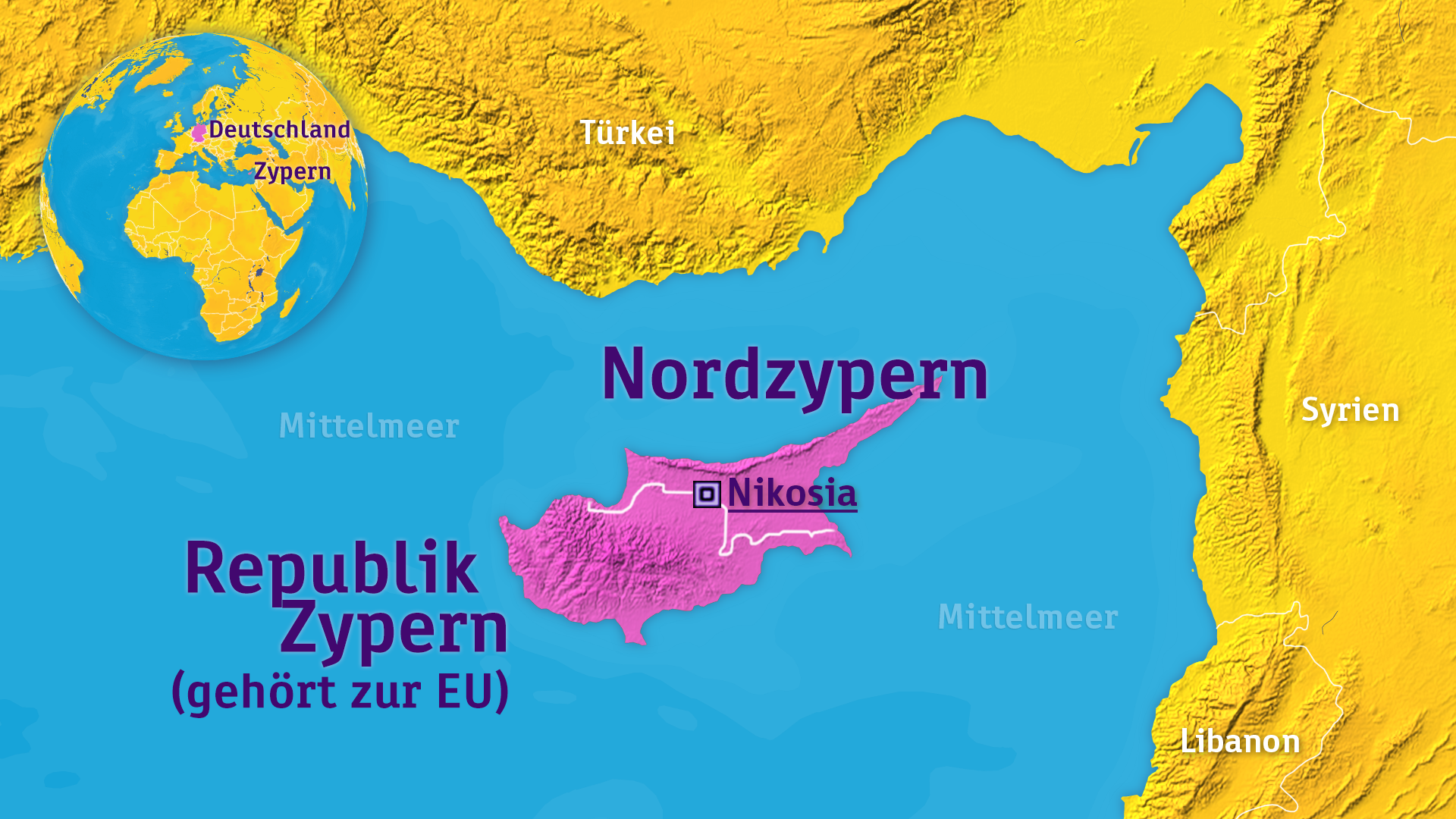

 Geographie
Geographie

 Geographie
Geographie
 ***IWF Entwickelte Länder
***IWF Entwickelte Länder
 IWF entwickelte Länder
IWF entwickelte Länder
 IWF entwickelte Länder
IWF entwickelte Länder
 TOP5
TOP5

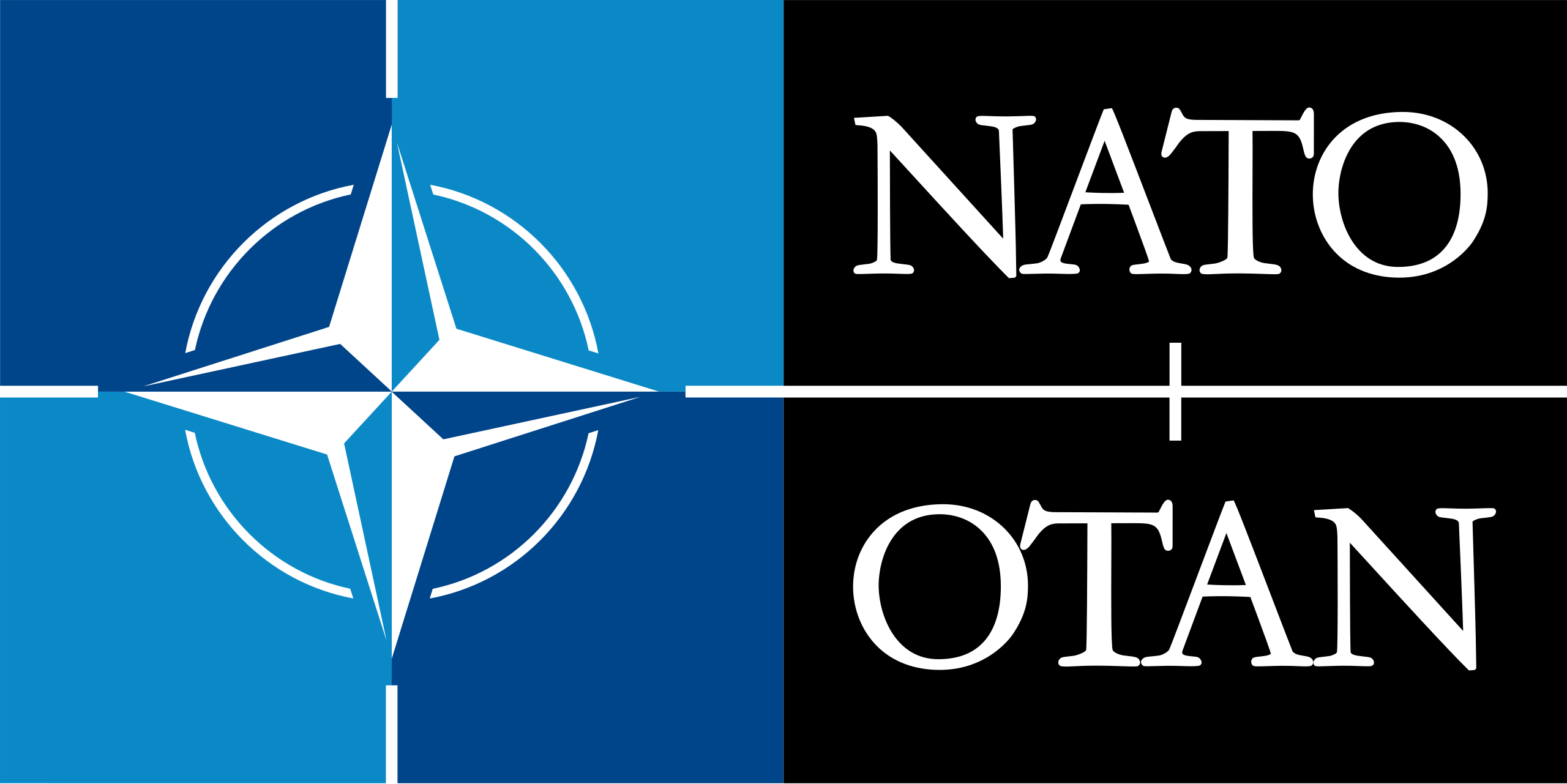 Mitglieder der NATO
Mitglieder der NATO
 Slowakei
Slowakei

 Staaten Europas
Staaten Europas
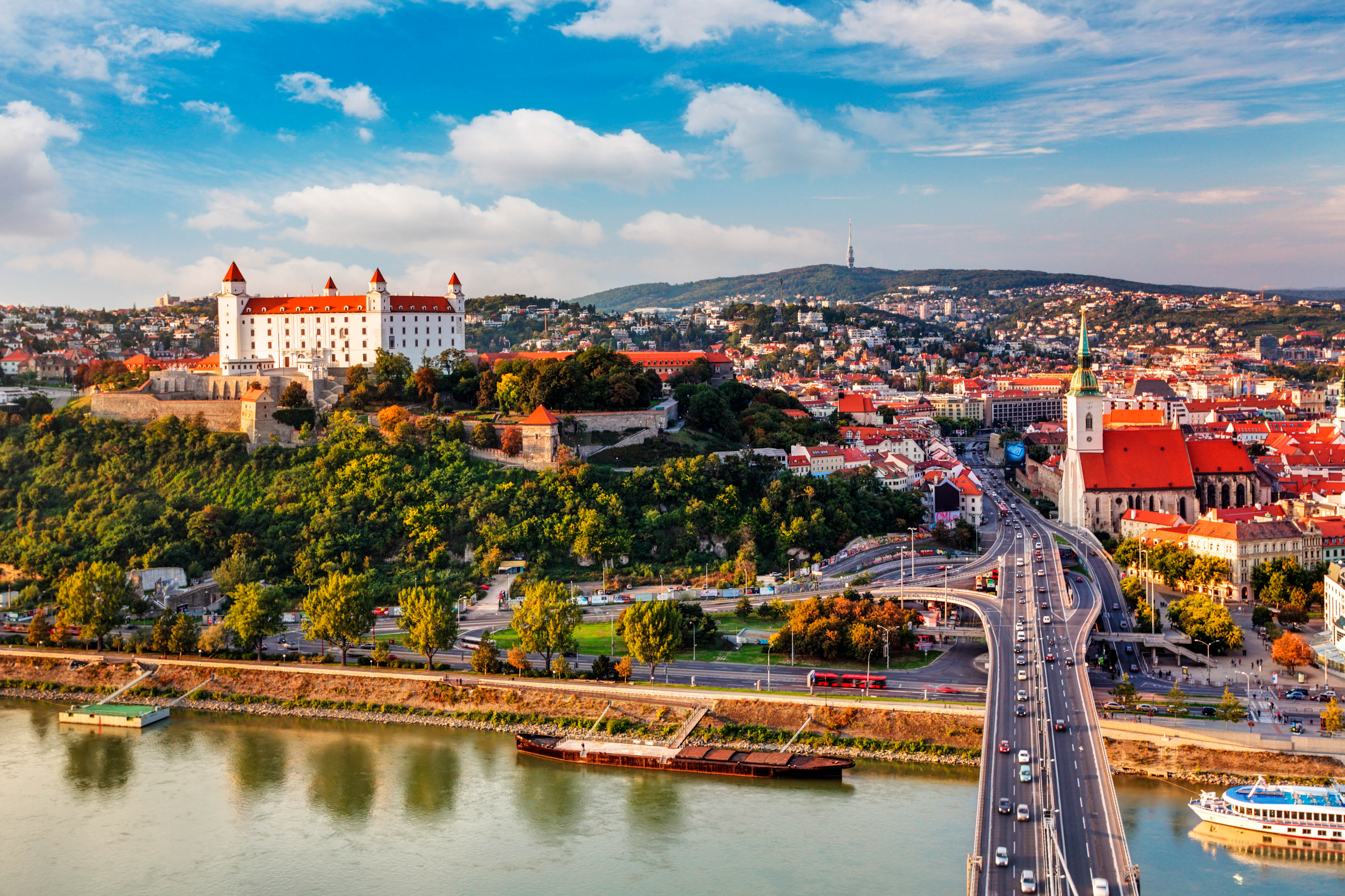
Die Slowakei (slowakisch , amtlich Slowakische Republik, slowakisch ) ist ein Binnenstaat in Mitteleuropa, der an Österreich, Tschechien, Polen, die Ukraine und Ungarn grenzt. Die Hauptstadt und gleichzeitig größte Stadt des Landes ist Bratislava (deutsch Pressburg), weitere wichtige Städte sind Košice (Kaschau), Prešov (Eperies), Žilina (Sillein), Banská Bystrica (Neusohl) und Nitra (Neutra).
Das Land ist zu zwei Dritteln gebirgig und hat einen beträchtlichen Anteil am Karpatenbogen. Im Westen reicht es bis zum nördlich der Donau liegenden Teil des Wiener Beckens, während der Süden und Südosten bis zur Donau und einem kleinen Teil der Theiß durch Ausläufer der Pannonischen Tiefebene geprägt sind. Die Slowakei liegt in der kontinental-gemäßigten Klimazone mit Unterschieden zwischen dem tiefer gelegenen Süden und dem gebirgigen Norden des Landes.
Das Gebiet der heutigen Slowakei wurde am Wendepunkt des 5. und 6. Jahrhunderts von den Slawen besiedelt. Deren erstes politisches Gebilde war das Reich des Samo (7. Jahrhundert), später befand sich in der Slowakei eines der Zentren des frühmittelalterlichen Mährerreiches. Im 11. Jahrhundert wurde die Slowakei in das Königreich Ungarn eingegliedert, das ab 1526 Teil der Habsburgermonarchie und ab 1867 Teil Österreich-Ungarns war. Nach der Auflösung der Doppelmonarchie 1918 wurde die Slowakei Teil der neu gegründeten Tschechoslowakei. Mit deren Zerschlagung durch das Deutsche Reich entstand 1939 der kurzlebige Slowakische Staat. Nach dem Ende des Zweiten Weltkrieges wurde die tschechoslowakische Republik 1945 wiederhergestellt. Am 1. Januar 1993 entstand nach friedlicher Aufteilung der Tschechoslowakei die unabhängige Slowakische Republik als Nationalstaat der Slowaken.
Seit 2004 ist die Slowakei Mitglied der Europäischen Union und der NATO. Im Jahr 2007 wurden gemäß dem Schengen-Abkommen die Grenzkontrollen zu EU-Staaten aufgehoben, 2009 trat die Slowakei der Eurozone bei. Das Land ist eine demokratisch verfasste parlamentarische Republik. Mit Polen, Tschechien und Ungarn bildet die Slowakei die Visegrád-Gruppe.
Das Entwicklungsprogramm der Vereinten Nationen zählt die Slowakei zu den Ländern mit sehr hoher menschlicher Entwicklung.[3]
斯洛伐克共和国(斯洛伐克语:Slovenská republika[1][2]![]() i/sloʊˈvækiə, -ˈvɑːk-/;[3][4] ;通称斯洛伐克,斯洛伐克语:Slovensko [ˈslɔʋenskɔ] (
i/sloʊˈvækiə, -ˈvɑːk-/;[3][4] ;通称斯洛伐克,斯洛伐克语:Slovensko [ˈslɔʋenskɔ] (![]() 聆听)),是位于中欧的议会制国家。斯洛伐克的官方语言为斯洛伐克语。其前身为捷克斯洛伐克,于1993年和平分离成捷克与斯洛伐克两个国家。面积约4.9万平方公里,居民约546万。西北邻捷克,北邻波兰,东邻乌克兰,南邻匈牙利,西南邻奥地利,首都和最大城市为布拉迪斯拉发。
聆听)),是位于中欧的议会制国家。斯洛伐克的官方语言为斯洛伐克语。其前身为捷克斯洛伐克,于1993年和平分离成捷克与斯洛伐克两个国家。面积约4.9万平方公里,居民约546万。西北邻捷克,北邻波兰,东邻乌克兰,南邻匈牙利,西南邻奥地利,首都和最大城市为布拉迪斯拉发。
斯洛伐克人系斯拉夫人的一支,祖先于六世纪左右定居斯洛伐克。公元7世纪,同其他部落共组萨摩帝国。公元9世纪,斯洛伐克人建立尼特拉公国,后被摩拉维亚公国征服,并为大摩拉维亚王国的一部分。10世纪,即大摩拉维亚王国解体后,斯洛伐克并入匈牙利公国,并于公元1000年成为匈牙利的构成地域。[5]经1241年和1242年的蒙古西征,该地因征战曾被焚毁殆尽,但随后在匈牙利王贝拉四世的领导下逐渐恢复,他同时也引入日耳曼德意志移民,使德裔民族成为除斯洛伐克人外的主要民族,尤其在中部和东部。[6]
奥匈帝国经一战解体,成立捷克斯洛伐克共和国。在第二次世界大战期间,斯洛伐克成为纳粹德国附庸国。二战结束后,捷克斯洛伐克重获独立。1948年共产党人发动二月政变,使捷克斯洛伐克成为共产主义国家,并接受苏联领导,成为其东方集团成员。随后的二十年里,捷克斯洛伐克民族主义及反共情绪逐渐高涨,这一热潮在布拉格之春达到巅峰;在该年八月份,因苏联武装入侵捷克斯洛伐克平息此运动。1989年,以公民论坛为主导的社会团体发起天鹅绒革命,结束了共产主义统治。1993年1月1日,捷克斯洛伐克议决天鹅绒分离,使斯洛伐克正式成为一个主权独立的国家。
スロバキア共和国(スロバキアきょうわこく、スロバキア語: Slovenská republika)、通称スロバキアは、中央ヨーロッパの共和制国家。首都はブラチスラヴァで、北西にチェコ、北にポーランド、東にウクライナ、南にハンガリー、南西にオーストリアと隣接する。
国体が常に激しく変化して来た歴史を持つ国家の一つである。古代にはサモ王国[注釈 1](623年 - 658年)・モラヴィア王国として独立を保った期間もあったが、この地のスラブ人は1000年間少数民族としてハンガリー王国の支配下に置かれていた。ハンガリーにとっても歴史的に重要な地域であり、多くのハンガリー人の出身地、ハンガリー貴族の発祥地でもある(元来スラブ系で、ハンガリー文化に同化した者も多い)。第一次世界大戦後、オーストリア・ハンガリー帝国からチェコと合併するかたちで独立し、1989年のビロード革命による共産党政権崩壊を経て、1993年1月1日にチェコスロバキアから分離独立し現在に至る。
Slovakia (/sloʊˈvækiə, -ˈvɑːk-/ (![]() listen);[7][8] Slovak: Slovensko [ˈslɔʋenskɔ] (
listen);[7][8] Slovak: Slovensko [ˈslɔʋenskɔ] (![]() listen)), officially the Slovak Republic (Slovak: Slovenská republika [ˈslɔʋenskaː ˈrepublika] (
listen)), officially the Slovak Republic (Slovak: Slovenská republika [ˈslɔʋenskaː ˈrepublika] (![]() listen)), is a landlocked country in Central Europe. It is bordered by Poland to the north, Ukraine to the east, Hungary to the south, Austria to the southwest, and the Czech Republic to the northwest. Slovakia's mostly mountainous territory spans about 49,000 square kilometres (19,000 sq mi), with a population of over 5.4 million. The capital and largest city is Bratislava, while the second largest city is Košice.
listen)), is a landlocked country in Central Europe. It is bordered by Poland to the north, Ukraine to the east, Hungary to the south, Austria to the southwest, and the Czech Republic to the northwest. Slovakia's mostly mountainous territory spans about 49,000 square kilometres (19,000 sq mi), with a population of over 5.4 million. The capital and largest city is Bratislava, while the second largest city is Košice.
The Slavs arrived in the territory of present-day Slovakia in the 5th and 6th centuries. In the 7th century, they played a significant role in the creation of Samo's Empire. In the 9th century, they established the Principality of Nitra, which was later conquered by the Principality of Moravia to establish Great Moravia. In the 10th century, after the dissolution of Great Moravia, the territory was integrated into the Principality of Hungary, which would then become the Kingdom of Hungary in 1000.[9] In 1241 and 1242, after the Mongol invasion of Europe, much of the territory was destroyed. The area was recovered largely thanks to Béla IV of Hungary, who also settled Germans, leading them to become an important ethnic group in the area, especially in what are today parts of central and eastern Slovakia.[10]
After World War I and the dissolution of Austria-Hungary, the state of Czechoslovakia was established. It was the only country in central and eastern Europe to remain a democracy during the interwar period. Nevertheless, local fascist parties gradually came to power in the Slovak lands, and the first Slovak Republic existed during World War II as a partially-recognized client state of Nazi Germany. At the end of World War II, Czechoslovakia was re-established as an independent country. After a coup in 1948, Czechoslovakia came under communist administration, and became a part of the Soviet-led Eastern Bloc. Attempts to liberalize communism in Czechoslovakia culminated in the Prague Spring, which was crushed by the Warsaw Pact invasion of Czechoslovakia in August 1968. In 1989, the Velvet Revolution peacefully ended the Communist rule in Czechoslovakia. Slovakia became an independent state on 1 January 1993 after the peaceful dissolution of Czechoslovakia, sometimes known as the Velvet Divorce.
La Slovaquie, en forme longue la République slovaque (en slovaque : Slovensko et Slovenská republika), est un pays situé en Europe centrale, au cœur de l'Europe continentale et à l'est de l'Union européenne, dont elle est membre depuis 200417. Ses pays frontaliers sont la Pologne au nord, l'Ukraine à l'est, la Hongrie au sud, l'Autriche à l'ouest et la Tchéquie à l'ouest-nord-ouest17. Coeur de la Grande-Moravie, la Slovaquie fit partie du Royaume de Hongrie à partir du XIè siècle. Du 28 octobre 1918 au 21 mars 1939, puis du 4 avril 1945 au 31 décembre 1992, elle a, avec la Tchéquie, fait partie de la Tchécoslovaquie8,18. De 1939 à 1945 fut constituée, à partir des décombres de la Tchécoslovaquie, une République slovaque - en partie démembrée au profit de la Hongrie - soumise au Troisième Reich.
La Slovaquie est membre de nombreuses organisations internationales, telles que l'ONU19, l'OTAN19, l'OMC20, l'OCDE19 ou encore le V421, et fait partie de la zone euro15.
La Slovacchia (Slovàcchia), ufficialmente Repubblica Slovacca (in slovacco Slovensko o Slovenská republika)[7] è uno Stato senza sbocco al mare costituito come repubblica parlamentare, situato nell'Europa centro-orientale. Ha una popolazione di più di 5 milioni di abitanti e un'area di circa 49.000 chilometri quadrati. La città più grande è anche la capitale, Bratislava, e la seconda città più grande è Košice. Confina con la Repubblica Ceca a nord-ovest, con la Polonia a nord, con l'Ucraina a est, con l'Ungheria a sud e con l'Austria a sud-ovest. È uno Stato membro dell'Unione europea, della NATO, delle Nazioni Unite, dell'OCSE e dell'OMC. La lingua ufficiale è lo slovacco, lingua appartenente al ceppo delle lingue slave.
Gli slavi arrivarono in quello che oggi è il territorio slovacco tra il V e il VI secolo durante le invasioni barbariche. Nel corso della storia, diverse parti del territorio attuale appartennero al Regno di Samo (il primo ente politico conosciuto degli Slavi), al Principato di Nitra, alla Grande Moravia, al Regno d'Ungheria, all'Impero austro-ungarico e alla Cecoslovacchia. Il 30 ottobre 1918 venne approvata la Dichiarazione di Martin o Dichiarazione del popolo slovacco. Uno Stato slovacco indipendente è esistito brevemente durante la seconda guerra mondiale, quale Stato fantoccio della Germania nazista dal 1939 al 1944. Dal 1945 la Slovacchia tornò a far parte nuovamente della Cecoslovacchia. La Repubblica Slovacca e la Repubblica Ceca sono nate il 1º gennaio 1993 dalla divisione, sancita dal parlamento della Cecoslovacchia, che già dal 1990 aveva assunto il nome di Repubblica Federale Ceca e Slovacca.
La Slovacchia rientra nel gruppo degli Stati avanzati. Nel 2004 è entrata a fare parte dell'Unione europea e nel 2009 ha adottato l'euro. La Slovacchia, la Slovenia, l'Estonia, la Lettonia e la Lituania sono gli unici Stati del passato blocco orientale a far parte allo stesso tempo dell'Unione europea, dell'eurozona, della zona Schengen e della NATO.
Eslovaquia (en eslovaco: ![]() Slovensko (?·i)), oficialmente denominada República Eslovaca (en eslovaco:
Slovensko (?·i)), oficialmente denominada República Eslovaca (en eslovaco: ![]() Slovenská republika (?·i)), es uno de los veintisiete Estados soberanos que forman la Unión Europea. Situado en Europa Central, limita al norte con Polonia, al este con Ucrania, al sur con Hungría, al oeste con Austria y al noroeste con República Checa. Tiene una población de 5 389 180 habitantes y su capital es Bratislava, con 425 155 habitantes. Los montes Cárpatos ocupan toda la zona septentrional del país.
Slovenská republika (?·i)), es uno de los veintisiete Estados soberanos que forman la Unión Europea. Situado en Europa Central, limita al norte con Polonia, al este con Ucrania, al sur con Hungría, al oeste con Austria y al noroeste con República Checa. Tiene una población de 5 389 180 habitantes y su capital es Bratislava, con 425 155 habitantes. Los montes Cárpatos ocupan toda la zona septentrional del país.
Слова́кия (словацк. Slovensko [ˈslɔʋɛnskɔ]), официальное название — Слова́цкая Респу́блика (словацк. Slovenská republika) — государство в Центральной Европе. Население составляет 5 443 120 человек (декабрь 2017)[7], территория — 48 845 км². Занимает 112-е место в мире по численности населения и 127-е по территории.
Столица — Братислава. Государственный язык — словацкий.
Унитарное государство, парламентская республика. По состоянию на апрель 2021 года пост президента занимает Зузана Чапутова, премьер-министра — Эдуард Хегер. Подразделяется на 8 краёв.
Расположена в центре Европы. Континентальное государство, не имеющее выхода к морю. Имеет сухопутную границу с Чехией, Австрией, Польшей, Венгрией, Украиной.
Большая часть верующих (около 70 % населения) исповедует католицизм.
Словакия — член НАТО и ЕС. Индустриальная страна с динамично развивающейся экономикой. Объём ВВП за 2011 год составил 127,111 млрд долларов США (около 23 384 долларов на душу населения). Денежная единица — евро.
Независимость страны провозглашена 1 января 1993 года. На протяжении истории территория страны входила в состав многих держав и государственных образований, начиная от Государства Само в VII веке вплоть до Чехословакии в XX веке. В годы Второй мировой войны существовало зависимое от нацистской Германии словацкое государство, которое в 1945 году вновь стало частью Чехословакии.

 Geographie
Geographie

 Geographie
Geographie
 ***IWF Entwickelte Länder
***IWF Entwickelte Länder
 IWF entwickelte Länder
IWF entwickelte Länder
 IWF entwickelte Länder
IWF entwickelte Länder
 TOP3
TOP3

 Mitglieder der NATO
Mitglieder der NATO
 Spanien
Spanien

 Staaten Europas
Staaten Europas

Spanien (amtlich Königreich Spanien, spanisch Reino de España [ˈrejno ð(e) esˈpaɲa] , auf Galicisch Reino de España, Katalanisch Regne d’Espanya, Asturisch Reinu d’España, Baskisch Espainiako Erresuma, Aranesisch Reialme d’Espanha, Aragonesisch Reino d'Espanya) ist ein Staat im Südwesten Europas und eine parlamentarische Erbmonarchie. Das Staatsgebiet liegt größtenteils auf der Iberischen Halbinsel.
Spanien untergliedert sich in 17 autonome Gemeinschaften und zwei autonome Städte (spanisch ciudades autónomas), Ceuta und Melilla. Die Hauptstadt und größte Metropole ist Madrid, weitere Ballungszentren sind Barcelona, Valencia, Sevilla, Bilbao, Zaragoza und Málaga.
Spanien ist Mitglied der UNO, der EU, der OECD und der NATO. Es zählt zu den sehr hoch entwickelten Ländern und zu den zwanzig größten Export- und Importnationen (2012).[5] Spanien ist das am dritthäufigsten besuchte Land der Welt.[6]
西班牙是一个高度发达的资本主义国家,是欧盟和北约成员国,还是欧元区第五大经济体。
西班牙王国(西班牙语:Reino de España),通称西班牙(España),古籍译为日斯巴尼亚或以西巴尼亚,《圣经》曾译为“士班雅”[9],是位于欧洲西南部的君主立宪国家,与葡萄牙和安道尔同处于伊比利亚半岛,东北部与法国、安道尔接壤,国土面积则占伊比利亚半岛的五分之四。其领土还包括地中海中的巴利阿里群岛、大西洋的加那利群岛、以及在非洲北部的休达和梅利利亚。首都兼最大都市为马德里。
由于位处欧洲与非洲的交界,西班牙自史前时代以来就一直受许多外来影响,中世纪时有多国并立,至15世纪始建立单一国家,在近代史上是影响其他地区文化的重要发源地。其全球帝国兴盛时给世界带来的影响是,现今全球有5亿人口使用西班牙语,使西班牙语成为世界上总使用人数第三多,母语人数第二多的语言。西班牙为中等发达国家,拥有较高的社会福利,人均GDP在三万美元左右,拥有发达国家里较高的失业率。

 Geographie
Geographie

 Geographie
Geographie
 ***IWF Entwickelte Länder
***IWF Entwickelte Länder
 Griechenland
Griechenland
 IWF entwickelte Länder
IWF entwickelte Länder
 IWF entwickelte Länder
IWF entwickelte Länder
 TOP5
TOP5

 Mitglieder der NATO
Mitglieder der NATO

 Staaten Europas
Staaten Europas
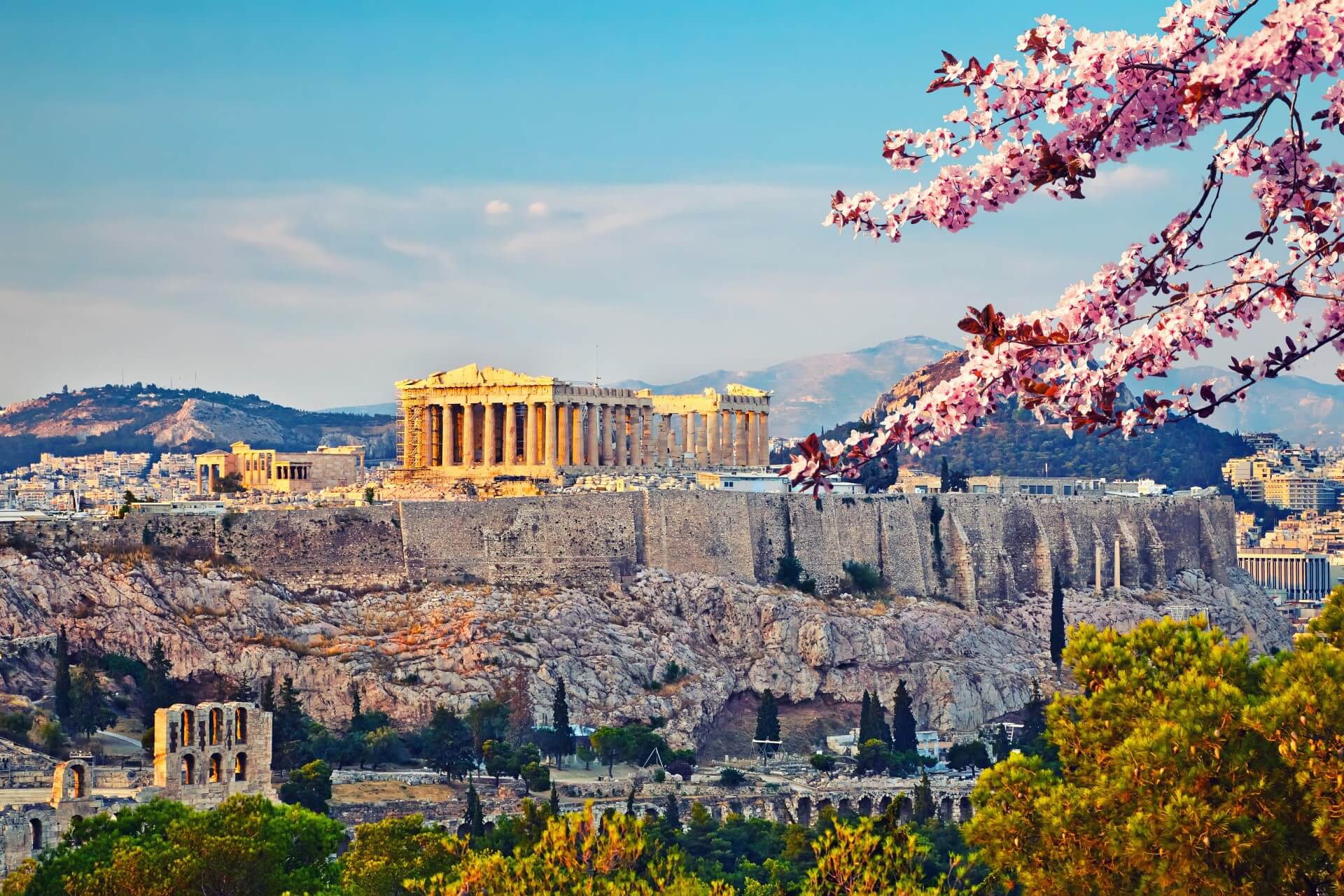
Griechenland (griechisch Ελλάδα [ɛˈlaða], Elláda, formell Ελλάς, Ellás ‚Hellas‘; amtliche Vollform Ελληνική Δημοκρατία, Ellinikí Dimokratía ‚Hellenische Republik‘[6]) ist ein Staat in Südosteuropa und ein Mittelmeeranrainerstaat. Das griechische Staatsgebiet grenzt an Albanien, Nordmazedonien, Bulgarien und die Türkei. Griechenland ist eine parlamentarische Republik mit präsidialen Elementen; die Exekutive liegt bei der Regierung, zum kleineren Teil auch beim Staatspräsidenten. Die Hauptstadt des Landes ist Athen. Weitere bedeutende große Städte sind Thessaloniki, Patras, Iraklio und Piräus.
Das antike Griechenland ist als frühe europäische Hochkultur bekannt, die wichtige Errungenschaften wie die attische Demokratie und Philosophie, frühe Naturwissenschaften und die klassische griechische Architektur hervorbrachte. Nach dem Ende der Antike und dem Aufgehen in verschiedenen Großreichen wie Byzanz und Osmanischem Reich konnte erst im 19. Jahrhundert im Zuge der griechischen Revolution und der folgenden Unabhängigkeit von den Osmanen wieder ein griechischer Staat gebildet werden. Die heutige parlamentarische Präsidialdemokratie geht zurück auf das Referendum im Dezember 1974 zur Abschaffung der Monarchie und für die Einführung der Republik.
Griechenland ist Mitglied der Vereinten Nationen, der OECD, der NATO (seit 1952), der OSZE und des Europarates. 1981 wurde Griechenland in die Europäische Union aufgenommen. Zum 1. Januar 2001 trat Griechenland der Eurozone bei.
Gemessen am Index der menschlichen Entwicklung (HDI) zählt Griechenland zu den sehr hoch entwickelten Staaten.[7] Wirtschaftlich bedeutend sind insbesondere die Branchen Tourismus und Handel. Das verarbeitende Gewerbe hat (Stand 2015) im Vergleich zu anderen hochentwickelten Staaten geringe Bedeutung. Einen wesentlichen Anteil im Industriesektor haben das Ernährungsgewerbe und die Metallverarbeitung. Nach einer langen Rezession oder Stagnation der Wirtschaft seit 2008 erholt sich die Wirtschaft seit 2017 wieder; die Arbeitslosenquote Griechenlands ist die höchste in der Europäischen Union.
希腊共和国(希腊语:Ελληνική Δημοκρατία),简称“希腊”(希腊语:Ελλάδα),是地处欧洲东南角、巴尔干半岛的南端的共和制国家。全国由半岛南部的伯罗奔尼撒半岛和爱琴海中的3000余座岛屿共同构成。希腊为连接欧亚非的战略要地,本土从西北至正北部分别邻阿尔巴尼亚、马其顿、保加利亚三国,东北与土耳其国境接壤。周围则自东而西分别濒临爱琴海、地中海本域与伊奥尼亚海。
希腊是一个发达的资本主义国家,也是欧盟和北约的成员国,而且还是巴尔干地区最大的经济体。其海运业,旅游、侨汇并列为外汇收入三大支柱。且农业发达,工业主要以食品加工和轻工业为主。
希腊共和国(希腊语:Ελληνική Δημοκρατία,希腊语发音:[eliniˈci ðimokraˈti.a])[8][9],通称希腊(希腊语:Ελλάς,希腊语发音:[eˈlas]或希腊语:Ελλάδα,希腊语发音:[eˈlaða]),是位于欧洲东南部的跨大洲国家。2019年其人口为1,080万。雅典为希腊首都及最大城市,塞萨洛尼基为第二大城市。
希腊位于欧洲、亚洲和非洲的十字路口,战略地位重要。其位于巴尔干半岛南端,西北邻阿尔巴尼亚,北部邻北马其顿和保加利亚,东北邻土耳其。希腊分为九个地区:马其顿、中希腊、伯罗奔尼撒、色萨利、伊庇鲁斯、爱琴海诸岛(包括十二群岛及基克拉泽斯)、色雷斯、克里特和伊奥尼亚群岛。爱琴海位于希腊本土东侧,爱奥尼亚海位于西侧,克里特海和地中海位于南侧。希腊海岸线长达13,676千米(8,498英里),为地中海盆地国家中最长,世界第11长。希腊拥有大量岛屿,其中227个岛屿有人居住。其百分之八十区域为山地,奥林波斯山为全境最高峰,海拔2,918米(9,573英尺)。
希腊为世界上历史最悠久的国家之一,自公元前270,000年起即有人居住。其被称作西方文明的摇篮,为民主制度、西方哲学、奥林匹克运动会、西方文学、史学、政治学、重要科学及数学原理、西方戏剧(悲剧及喜剧)的发源地[10]。公元前4世纪马其顿腓力二世首先统一了希腊。其子亚历山大大帝迅速征服了古代世界的大片地区,将希腊文化和科学自东地中海地区传播至印度河流域。公元前2世纪希腊为罗马所吞并,成为罗马帝国及其继承国拜占庭帝国的核心组成部分,其中后者为希腊语言及文化所主导。公元1世纪希腊正教会建立起来,塑造了现代希腊的文化认同,并将希腊传统传播至正教世界[11]。15世纪中叶,奥斯曼帝国夺取了希腊地区。在十九世纪二十年代历经独立战争后,于1830年希腊作为现代民族国家被国际社会所承认。希腊拥有18项世界遗产,其中包括文化遗产16项,文化与自然双重遗产2项,这一数目在欧洲及世界均居前列[12]。
希腊为民主制国家,发达国家及高收入经济体,其生活质量较高,及人类发展指数为极高。希腊为联合国创始国之一,为欧洲共同体(欧洲联盟前身)第十个成员国,并自2001年以来为欧元区成员国。其亦为诸多国际组织的成员国,包括欧洲委员会、北大西洋公约组织、经济合作与发展组织、世界贸易组织、欧洲安全与合作组织及法语圈国际组织。希腊的独特文化地位、旅游业、船运业及战略地位使其被归为一中等强国[13][14][15]。其为巴尔干地区最大规模经济体,并为这一区域重要的投资者之一。
 Commonwealth of Nations
Commonwealth of Nations

 Geographie
Geographie

 Geographie
Geographie
 ***IWF Entwickelte Länder
***IWF Entwickelte Länder
 IWF entwickelte Länder
IWF entwickelte Länder
 IWF entwickelte Länder
IWF entwickelte Länder
 TOP4
TOP4
 Singapur
Singapur
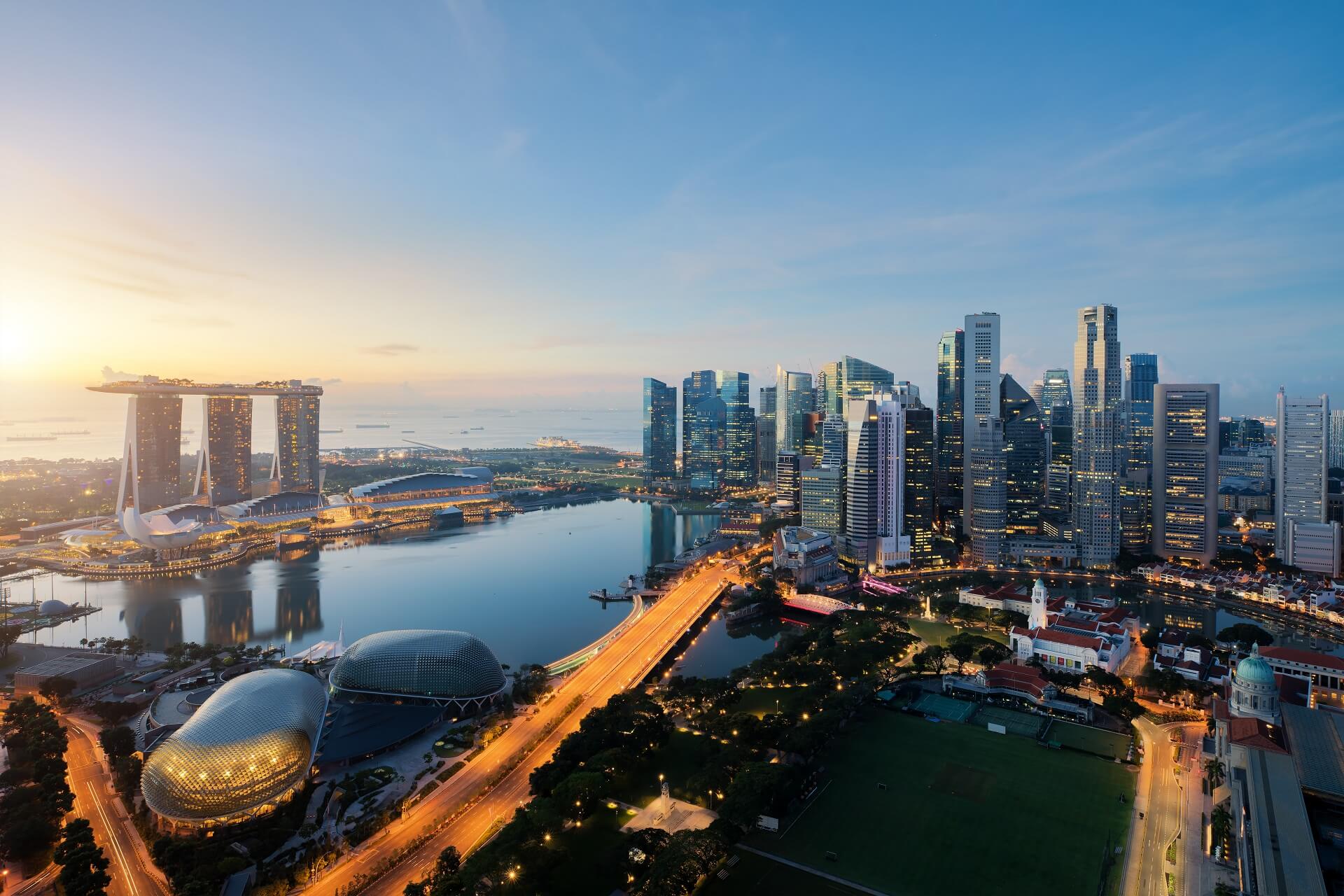
新加坡共和国(英语:Republic of Singapore;马来语:Singapura;泰米尔语:சிங்கப்பூர் குடியரச),通称新加坡,是东南亚中南半岛南端的一个城邦岛国、城市国家。该国位于马来半岛南端,扼守马六甲海峡最南端出口,其南面有新加坡海峡与印尼相隔,北面有柔佛海峡与西马来西亚相隔,并以新柔长堤与第二通道等这两座桥梁相连于新马两岸之间。新加坡的国土除了新加坡本岛之外,还包括周围所属岛屿,新加坡最大的外岛为德光岛。从新加坡独立以来,大规模的填海已经为新加坡增加了23%的面积,相等于增加了130平方公里。
1819年,任职于英国不列颠东印度公司的斯坦福·莱佛士与柔佛苏丹签订条约,获准在新加坡建立交易站和殖民地,经莱佛士的努力,逐渐发展成繁荣的转口港。由于地理位置特殊,新加坡在第二次世界大战以前一直是大英帝国在东南亚最重要的战略据点。1942年至1945年间,新加坡曾被日本占领三年半之久,其后回归英国管理,并从海峡殖民地独立出来,1959年成立自治邦,1963年加入马来西亚成为一个州,称为新加坡州(简称星州)。1965年8月9日,马来西亚国会以126票赞成、0票反对,同意将新加坡驱逐出联邦。新加坡共和国正式成立,李光耀为总理,尤索夫·伊萨为总统。新加坡被驱逐马来西亚后独立建国。
自1965年独立后,新加坡从穷困潦倒中,依靠着国际贸易和人力资本的操作,迅速转变成为富裕的亚洲四小龙之一,同时凭借着地理优势,新加坡也是亚洲重要的金融、服务和航运中心之一。教育素质良好的国民也是亚洲政治和科学文化的纽带,大多数的新加坡人都通晓至少两种语言,分别是英语以及自己的母语。新加坡是个多元文化种族的社会,也是全球最国际化的国家之一,所以主要由华人组成的新加坡并非为单一民族国家,而是和一部分马来人及印度人所组成的移民国家,其中华人文化以福建移民为大宗[6]。在国内居住的居民有38%为永久居民、持有工作签证的外籍劳工以及持有学生签证的学生,建筑业和服务业的外劳比例分别为80%和50%[7][8][9][10]。整个城市在绿化和环境卫生方面效果显著,故有花园城市之美称。
Singapur (amtlich Republik Singapur, englisch Republic of Singapore [ɹɪˈpʰʌb.lɪkʰ.əv.ˈsɪŋ.(g)ə.pʰɔː], malaiisch Republik Singapura, chinesisch 新加坡共和国, Pinyin Xīnjiāpō Gònghéguó, auch: 新加坡 [ɕin.tɕiɑ.pʰuɔ], Tamil சிங்கப்பூர் குடியரசு Ciṅkappūr Kudiyarasu) ist ein Insel- und Stadtstaat und der flächenmäßig kleinste Staat Südostasiens. Er ist Mitglied im Commonwealth of Nations.
Beim Index der menschlichen Entwicklung belegte Singapur 2018 den neunten Platz.[6] Singapur ist eines der reichsten Länder (und Städte) weltweit und gilt als eine der Städte mit den weltweit höchsten Lebenshaltungskosten.[7] Zudem zählt der Stadtstaat mit mehr als elf Millionen ausländischen Touristen im Jahr zu den zehn meistbesuchten Städten der Welt[8] und gilt neben Hongkong als wichtigster Finanzplatz Asiens. Singapur ist ein multiethnischer Staat, in dem Chinesen, Malaien und Inder die größten Bevölkerungsteile stellen.
シンガポール共和国(シンガポールきょうわこく、英語: Republic of Singapore、マレー語: Republik Singapura、簡体字: 新加坡共和国、繁体字: 新加坡共和國、タミル語: சிங்கப்பூர் குடியரசு)、通称シンガポールは、東南アジアに位置し、シンガポール島及び60以上の小規模な島々からなる共和制国家[4]。
同国は、北はジョホール海峡により半島マレーシアから、南はシンガポール海峡によりインドネシアのリアウ諸島州から各々切り離されている。同国は高度に都市化され、原初の現存植生はほとんどない。シンガポールの領土は、一貫して埋立てにより拡大してきた。
シンガポールは、教育・エンターテインメント・金融・ヘルスケア・人的資本・イノベーション・ロジスティクス・製造・技術・観光・貿易・輸送の世界的な中心である。多くの国際順位で格付けされており、最も「テクノロジー対応」国(WEF)、国際会議のトップ都市(UIA)、世界で最もスマートな都市である「投資の可能性が最も高い」都市(BERI)、世界で最も安全な国、世界で最も競争力のある経済、3番目に腐敗の少ない国、3番目に大きい外国為替市場、3番目に大きい金融センター、3番目に大きい石油精製貿易センター、5番目に革新的な国、2番目に混雑するコンテナ港湾。2013年以来、エコノミストはシンガポールを「最も住みやすい都市」として格付けしている[5][6][7][8]。
シンガポールは、すべての主要な格付け機関からAAAソブリン格付けを持つ、アジアで唯一の国であり、世界11か国のうちの1つである。シンガポール航空は2018年の「世界最高の航空会社」であり、世界的にはシンガポール港とチャンギ国際空港がそれぞれ「マリタイムキャピタル」と「ベスト空港」のタイトルを連続して獲得している[9][10]。
シンガポールは、1人当たりGDPが2番目に高く、国連人間開発指数で9位である、主権国にとってアジアで最高。これは、教育・医療・平均余命・生活の質・個人の安全・住宅などの主要な社会的指標に高く置かれており、人口の90%が家の所有者である。
Singapore (/ˈsɪŋ(ɡ)əpɔːr/ ( listen)), officially the Republic of Singapore, is a sovereign city-state and island country located in maritime Southeast Asia. Singapore lies about one degree of latitude (137 kilometres or 85 miles) north of the equator, and is situated off the southern tip of the Malay peninsula, and, by extension, the southernmost extremity of continental Eurasia. The island country is wedged between western Indonesia and peninsular Malaysia, sharing its southern maritime border with the Batam, Bintan, and Karimun archipelago of the former's Riau Islands province, and its northern, western, and eastern maritime borders with the latter's Johor state; it is additionally in the vicinity of Sumatra to its west and Borneo to its east. The island country is enveloped by the littoral waters of the Johore Strait to its north and the Singapore Strait to its south, and is geographically positioned within the confluence of the Indian and Pacific Oceans, being bounded by the Malacca Strait to its west and the South China Sea to its east. The country's territory, which is archipelagic, is composed of one main island, 63 satellite islands and islets, and one outlying islet, the combined area of which has increased by 25% since the country's independence as a result of extensive land reclamation projects.
listen)), officially the Republic of Singapore, is a sovereign city-state and island country located in maritime Southeast Asia. Singapore lies about one degree of latitude (137 kilometres or 85 miles) north of the equator, and is situated off the southern tip of the Malay peninsula, and, by extension, the southernmost extremity of continental Eurasia. The island country is wedged between western Indonesia and peninsular Malaysia, sharing its southern maritime border with the Batam, Bintan, and Karimun archipelago of the former's Riau Islands province, and its northern, western, and eastern maritime borders with the latter's Johor state; it is additionally in the vicinity of Sumatra to its west and Borneo to its east. The island country is enveloped by the littoral waters of the Johore Strait to its north and the Singapore Strait to its south, and is geographically positioned within the confluence of the Indian and Pacific Oceans, being bounded by the Malacca Strait to its west and the South China Sea to its east. The country's territory, which is archipelagic, is composed of one main island, 63 satellite islands and islets, and one outlying islet, the combined area of which has increased by 25% since the country's independence as a result of extensive land reclamation projects.
Throughout its millennia-long history, Singapore—historically known by the names Pulau Ujong, Temasek, and subsequently Singapura—was a maritime emporium that fell under the suzerainty of several successive Indianised and Islamicate Malay polities: initially a series of ancient to medieval Hindu-Buddhist thalassocratic empires, subsequently a medieval localised Hindu-Buddhist kingdom, and ultimately two medieval to early modern Islamic sultanates.[14][Note 8] The 1819 arrival of Stamford Raffles, a British colonial officer, and the subsequent establishment of a British East India Company trading post on the main island—then part of the Johor Sultanate—marked the genesis of modern Singapore. Five years later, the British and Dutch East India companies partitioned the Sultanate, with the British coercively wresting Singapore from the Sultan in the process, marking the cessation of indigenous rule over the island for the first time in its history. In 1826, Singapore was incorporated into the Straits Settlements, a pan-Malayan presidency of the Company with Penang as capital,[15][Note 9] and in 1830, the Settlements were annexed to British India as a residency, where they would be governed from the capital of Calcutta under two administrations—until 1858 under Company rule, and—following the Company's collapse in the wake of the 1857 Indian Rebellion—until 1867 under the successive British Raj. In 1867, the administration of the Settlements was transferred to London, bringing them under the direct control of the United Kingdom as a Malayan crown colony.[16][17][18]
From 1867 to the 1940s, Singapore, having taken over Penang as capital of the Settlements, grew into a thriving entrepôt and settler-colony under the auspices of the British Empire, attracting large numbers of non-indigenous settlers and sojourners from the region and beyond.[19] During the Second World War, Imperial Japan invaded and annexed Singapore, resulting in an interregnum of British colonial rule corresponding with a brief but bloody Japanese occupation from 1942 to 1945. Following Japan's surrender in 1945, Singapore was returned to British control; in 1946, the Straits Settlements were dissolved, and Singapore became a standalone crown colony. In 1959, following a protracted period of agitation against colonial rule, Singapore was granted limited autonomy; in 1963, it became fully emancipated from the British Empire upon its federation with the territories of the erstwhile British Malaya and British Borneo to form the new country of Malaysia.[Note 10] However, after two tumultuous years as a constituent state of the Malaysian Federation, marred by violent ethnoreligious strife and other intractable differences between indigenous and non-indigenous groups, Singapore was expelled in 1965, becoming the first country in modern history to gain independence against its will—although this narrative remains contentious.[Note 11] After early years of turbulence, the newly sovereign nation—viewed as a nonviable state by international observers due to its diminutiveness, geostrategic vulnerability, absence of natural resources, and lack of a hinterland—defied odds by rapidly developing and industrialising under the leadership of the inaugural People's Action Party to become a high-income economy and developed country within a single generation.
Singapore is a unitary parliamentary constitutional republic with a unicameral legislature that has been characterised by dominant-party rule since independence. It is considered a soft authoritarian technocratic state; the Economist Intelligence Unit rated Singapore a "flawed democracy" in 2019.[21] It is the only truly sovereign city-state in the world; it has its own currency and a well-funded military that is considered the most advanced in Southeast Asia.[22] The country is home to 5.6 million residents, 61% (3.4 million) of whom are Singaporeans; as a legacy of its historical nature as an entrepôt and settler-colony, modern Singapore is a pluralistic country with a racially, culturally, and religiously diverse citizenry,[23][24] with one indigenous ethnic group, the Malays, and two settler-descended ethnic groups, the Chinese and Indians, forming the historical and contemporary core of the citizen populace. As a reflection of this pluralism, multiracialism has been enshrined as a foundational principle of the state, and has shaped the country's politics and national policies. The country, which is Anglophone, has four official languages: English, Malay, Chinese, and Tamil; Malay, as the ancestral language of the country, is accorded protected status in the country's constitution as the national language, while English is the lingua franca, being spoken as a common tongue by the vast majority of Singaporeans.
Singapore is one of the five founding members of ASEAN, is the headquarters of the Asia-Pacific Economic Cooperation (APEC) Secretariat and Pacific Economic Cooperation Council (PECC) Secretariat,[25] is a member of the United Nations, World Trade Organization, East Asia Summit, Non-Aligned Movement, and the Commonwealth of Nations, and is a recurrent guest invitee to the annual G20 summit;[26] its outsized influence on global affairs, relative to its size, has lead to it being classified as a middle power.[27][28] The country is the most developed sovereign nation in Asia, being ranked 9th on the UN Human Development Index, and has the 7th highest GDP per capita in the world.[29][30] It is also considered by Transparency International to be the most incorruptible nation in Asia, and the fifth most incorruptible worldwide. Singapore is placed highly in key social indicators: education, healthcare, quality of life, personal safety and housing, with a home-ownership rate of 91%. Singaporeans enjoy one of the world's longest life expectancies and one of the lowest infant mortality rates in the world.[31] As a city, Singapore is classified as an Alpha+ global city, and is the only country in Asia with an AAA sovereign rating from all major rating agencies. It is a major financial and shipping hub, consistently ranked the most expensive city to live in since 2013, and has been identified as a tax haven.[32][33] Singapore is also a popular tourist destination, with well-known landmarks such as the Merlion, Marina Bay Sands, Gardens by the Bay, the Jewel, the Orchard Road shopping belt, the resort island of Sentosa, and the Singapore Botanic Gardens, the only tropical garden in the world to be honoured as a UNESCO World Heritage Site.[34][35]
Singapour, en forme longue la république de Singapour (en anglais : Singapore et Republic of Singapore, en chinois : 新加坡 (Xīnjiāpō) et 新加坡共和国 (Xīnjiāpō Gònghéguó), en malais : Singapura et Republik Singapura, en tamoul : சிங்கப்பூர் (Ciṅkappūr) et சிங்கப்பூர் குடியரசு) (Ciŋkappūr Kudiyarasu), est une cité-État d’Asie du Sud-Est. Sa superficie est de 719,1 km2. Elle comprend 63 îles, dont la principale est Pulau Ujong (584,8 km2). Cette île est très densément urbanisée, mais la végétation luxuriante – même en plein centre-ville – a valu à Singapour le surnom de « ville jardin ». Cette abondance de verdure découle en partie d'un climat équatorial, uniformément chaud et orageux tout au long de l'année. Sa densité de population est la plus élevée d'Asie et la deuxième sur le plan mondial.
L'État de Singapour est situé à l'extrême sud de la péninsule Malaise, dont il est séparé au nord par le détroit de Johor, et borde au sud le détroit de Singapour. Il est connu et souvent montré en exemple pour son extraordinaire réussite économique. Après l'indépendance de l'Empire britannique en 1958, le rattachement à la Malaisie en 1963, puis l'indépendance en 1965, Singapour a su devenir, avec très peu de ressources naturelles et des problèmes socio-économiques importants – émeutes raciales, chômage massif, difficultés de logement et d'accès à l'eau –, l'un des pays les plus développés et les plus prospères du monde, en termes d'économie, d'éducation, de santé, de sécurité et d'urbanisme. La ville, cité souveraine, est un réduit chinois au cœur même du monde malais : la population est majoritairement composée de Chinois (74,3 %). De cette confrontation ethnique sont nés en partie les troubles qui ont accéléré son retrait de la Malaisie, le 9 août 19656.
Dans les années 1980, le pays fait partie, avec Hong Kong, la Corée du Sud et Taïwan, des quatre dragons asiatiques, des États en transition et au développement économique effréné. En 2011, Singapour est le troisième pays au monde en termes de produit intérieur brut à parité de pouvoir d'achat (PPA) par habitant après le Qatar et le Luxembourg7. Plaque tournante commerciale et financière entre la zone Pacifique et l'Europe, la ville doit son essor à sa situation maritime exceptionnelle à l'extrémité Est du détroit de Malacca, qui lui vaut le surnom de : Cité marchande aux confins de l'Orient. Elle possède le deuxième port au monde (après Shanghai) en termes d'exportations et de trafic maritime. La population singapourienne dispose d'un très haut niveau de vie et la Cité-État est souvent surnommée La Suisse d'Asie8. En 2009, Singapour affichait ainsi la plus forte concentration de millionnaires rapportés à la population totale devançant Hong Kong (Chine), la Suisse, le Qatar et le Koweït9.
Présentant une stabilité politique remarquable, Singapour est considéré aujourd'hui comme une « démocratie autoritaire » ou « dictature bienveillante », avec la même famille au pouvoir depuis l'indépendance. La cité-État est donc considérée comme un pays pratiquant le libéralisme économique sans le libéralisme politique.
Le centre-ville est situé dans le sud de l'île de Pulau Ujong, à l'embouchure de la rivière Singapour (Singapore River). Il comprend un centre d'affaires qui a fait de la ville la quatrième place financière au monde, ainsi que différents quartiers ethniques (chinois, malais, et indien) et une grande zone commerciale autour d'Orchard Road.
Singapore (AFI: /sinɡaˈpore/[5]), ufficialmente Repubblica di Singapore (in malese Republik Singapura; in inglese Republic of Singapore; in cinese 新加坡共和国, Xīnjiāpō Gònghéguó; in tamil சிங்கப்பூர் குடியரசு, Ciŋkappūr Kudiyarasu), è una città-Stato del sud-est asiatico, situata sull'estrema punta meridionale della penisola malese, 152 km a nord dell'equatore. Si sviluppa su un arcipelago formato da 58 isole, la più grande e principale delle quali è l'isola di Singapore che ospita la metropoli. A nord Singapore è separata dalla Malaysia dallo Stretto di Johor, a sud è separata dalle indonesiane isole Riau dallo Stretto di Singapore.
La città-Stato è il quarto principale centro finanziario del mondo[6] ed è una delle principali città cosmopolite del globo, con un importante ruolo nel commercio internazionale e nella finanza. Il suo porto è tra i primi cinque per attività e traffico su scala mondiale.[7]
Singapore è un Paese con una lunga storia di immigrazione. Ha una popolazione variegata e gli oltre 5 milioni di abitanti sono composti prevalentemente da cinesi, malesi, indiani e altre discendenze di asiatici ed europei.[8]
Il 42% della popolazione è straniero, qui presente per lavoro o studio. I lavoratori stranieri costituiscono il 50% del settore dei servizi.[9][10]
Singapore è il secondo Paese più densamente popolato del mondo dopo il Principato di Monaco e nel 2009 ha raggiunto la più alta concentrazione di milionari in rapporto alla popolazione, davanti a Hong Kong, Svizzera, Qatar e Kuwait.[11]
Singapur, oficialmente República de Singapur (en inglés: Republic of Singapore; en chino: 新加坡共和国 [Xīnjīapō Gònghéguó]; en malayo: Republik Singapura; y en tamil: சிங்கப்பூர் குடியரசு [Siṅkappūr Kuṭiyarasu]), es un país soberano insular de Asia, formado por sesenta y tres islas, cuya forma de gobierno es la república parlamentaria.
Su territorio se divide en cinco consejos de desarrollo comunitario. Su capital es la ciudad de Singapur, por lo que Singapur se considera una ciudad-estado. Está situado al sur del Estado de Johor en la península de Malasia y al norte de las islas Riau de Indonesia, separada de estas por el estrecho de Singapur. Con 697 km²,1 es el país más pequeño del Sudeste Asiático. Su territorio ha crecido constantemente con tierras ganadas al mar.
Desde el siglo II d. C., cuando se establecieron allí los primeros humanos, la isla de Singapur ha formado parte de varios imperios regionales. El moderno Singapur fue fundado en 1819 por el británico Thomas Stamford Raffles como puesto comercial de la Compañía Británica de las Indias Orientales con el permiso del Sultanato de Johor. El Reino Unido obtuvo la soberanía sobre la isla en 1824 y esta pasó a ser una de las Colonias del Estrecho británicas en 1826. Ocupada por los japoneses durante la Segunda Guerra Mundial, Singapur declaró su independencia del Reino Unido en 1963 como un estado más de Malasia mediante un referéndum de incorporación, de la que se separó dos años después. Desde entonces la ciudad-estado ha prosperado rápidamente y se ha ganado la distinción de ser uno de los «cuatro tigres asiáticos».
Singapur es una de las principales ciudades globales y uno de los centros neurálgicos del comercio mundial, contando con el tercer mayor centro financiero y el segundo puerto que más mercancías mueve. Su economía globalizada y diversificada depende especialmente del comercio y del sector manufacturero. En términos de paridad de poder adquisitivo, Singapur es el tercer país con mayor renta per cápita del mundo, además de figurar entre los primeros países en las listas internacionales de educación, sanidad, transparencia política y competitividad económica.
Políticamente, Singapur es una república parlamentaria multipartidista con un gobierno parlamentario unicameral inspirado en el sistema Westminster británico. El Partido de Acción Popular ha ganado todas las elecciones desde que el país obtuvo la independencia. Sin embargo, las libertades civiles y de expresión están sumamente restringidas y se dan casos de censura por parte del Gobierno, por lo que está considerado como un país con rasgos tanto democráticos como autoritarios.4 La población, unos cinco millones de habitantes, es muy diversa: alrededor de dos millones son de origen extranjero y entre los nativos, el 75 % son chinos y el resto minorías de malayos, indios o euroasiáticos. Esta diversidad tiene su reflejo en los cuatro idiomas oficiales del país, que son el inglés, el chino, el malayo y el tamil, así como en las políticas gubernamentales que promueven el multiculturalismo.5
Singapur es uno de los miembros fundadores de la Asociación de Naciones del Sudeste Asiático y ha sido sede del secretariado del Foro de Cooperación Económica Asia-Pacífico, además de formar parte de la Cumbre de Asia Oriental, del Movimiento de Países No Alineados y de la Mancomunidad de Naciones. El rápido desarrollo del país lo ha llevado a tener una influencia importante en los asuntos internacionales y a que algunos analistas lo consideren una potencia intermedia.67
Республика Сингапу́р (англ. Republic of Singapore; малайск. Republik Singapura, ريڤوبليق سيڠاڤورا; кит. трад. 新加坡共和國, упр. 新加坡共和国, пиньинь: Xīnjiāpō Gònghéguó, палл.: Синьцзяпо Гунхэго; там. சிங்கப்பூர் குடியரசு Ciŋkappūr Kudiyarasu) — город-государство, расположенный на островах в Юго-Восточной Азии, отделённых от южной оконечности Малаккского полуострова узким Джохорским проливом. Граничит с султанатом Джохор, входящим в состав Малайзии, и с провинцией Острова Риау, входящей в состав Индонезии.
Площадь Сингапура составляет 725,7 км² (2019 год), она постепенно увеличивается благодаря программе намыва территории, действующей с 1960-х годов. В настоящее время государство Сингапур состоит из 63 островов. Самые крупные из них — Сингапур (главный остров), Убин, Теконг-Бесар, Брани, Сентоса, Семакау и Судонг. Высшая точка — холм Букит-Тимах (163,3 м).
 Commonwealth of Nations
Commonwealth of Nations
 Fußball-Weltmeisterschaft der Frauen 2023
Fußball-Weltmeisterschaft der Frauen 2023

 Geographie
Geographie

 Geographie
Geographie
 ***IWF Entwickelte Länder
***IWF Entwickelte Länder
 IWF entwickelte Länder
IWF entwickelte Länder
 IWF entwickelte Länder
IWF entwickelte Länder
 TOP5
TOP5
 Neuseeland
Neuseeland



 Geographie
Geographie

 Geographie
Geographie
 ***IWF Entwickelte Länder
***IWF Entwickelte Länder
 IWF entwickelte Länder
IWF entwickelte Länder
 IWF entwickelte Länder
IWF entwickelte Länder
 TOP5
TOP5

 Mitglieder der NATO
Mitglieder der NATO

 Staaten Europas
Staaten Europas
 Ungarn
Ungarn
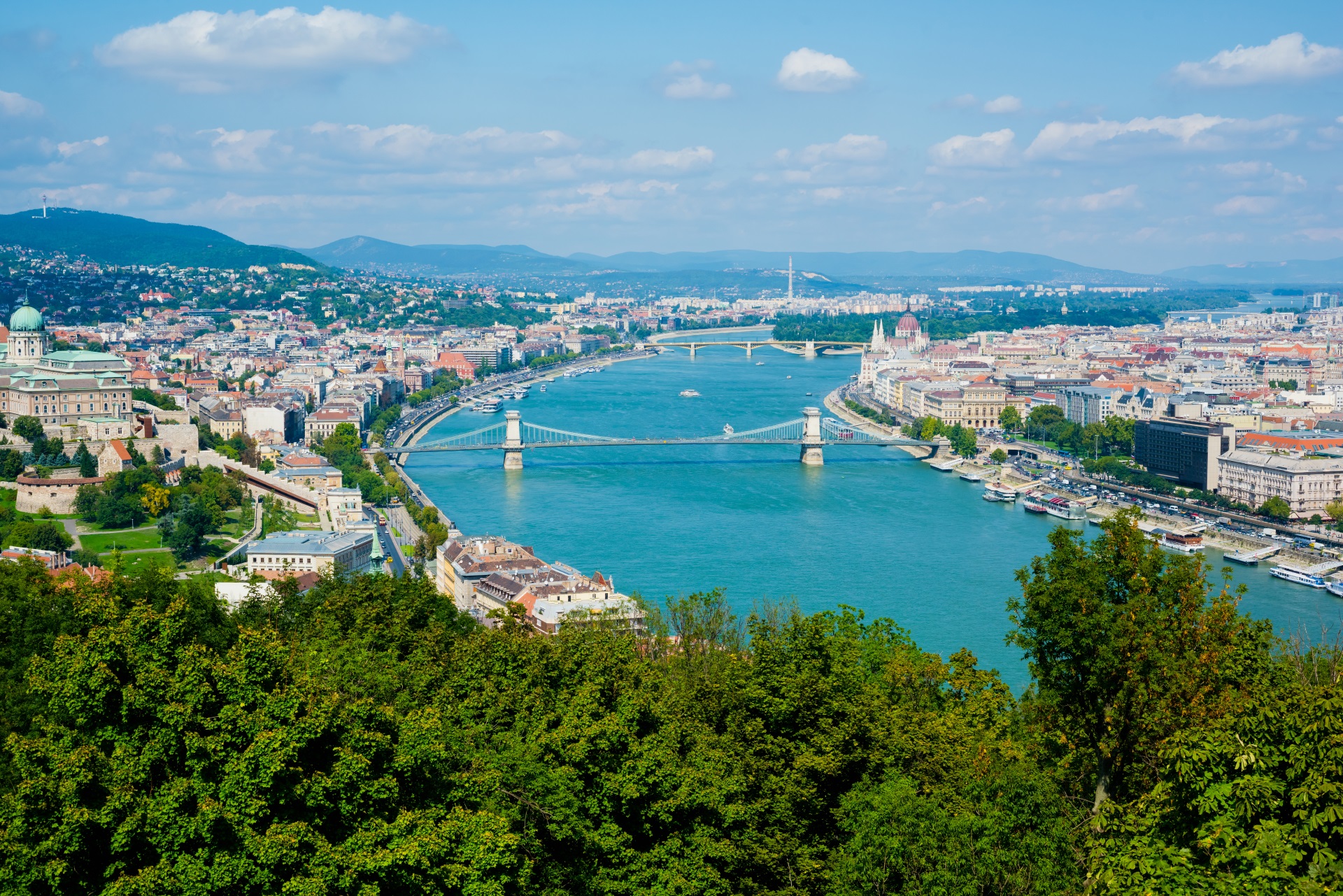
Ungarn (seit 2012 amtlich ungarisch Magyarország [ˈmɒɟɒrorsaːɡ] , vorher amtlich Magyar Köztársaság für Republik Ungarn) ist ein Binnenstaat in Mitteleuropa, der zum Großteil im Pannonischen Becken liegt. Nachbarstaaten sind Österreich, Slowakei, Ukraine, Rumänien, Serbien, Kroatien und Slowenien.
Seit 1999 ist Ungarn Mitglied der NATO und seit 2004 Mitglied der Europäischen Union. Die Hauptstadt des Landes ist Budapest, zu den weiteren Großstädten gehören Debrecen, Miskolc, Szeged, Pécs und Győr.
Israel (hebräisch ישראל Jisra'el) bzw. in Langform Staat Israel (hebräisch Medinat Jisra'el) ist ein Staat in Vorderasien an der Ostküste des Mittelmeers. Israel ist der einzige Staat der Welt mit mehrheitlich jüdischer Bevölkerung und gemäß eigenem Selbstverständnis Nationalstaat des jüdischen Volkes.[8][9][10][11] Israel gehört geographisch zum Maschrek und grenzt an den Libanon, Syrien, Jordanien, Ägypten sowie an Gazastreifen und Westjordanland. Hauptstadt und bevölkerungsreichste Stadt ist Jerusalem, größtes Ballungszentrum ist Gusch Dan um die am Mittelmeer gelegene Metropole Tel Aviv-Jaffa. Politik und Geschichte des Staates sind erheblich durch den andauernden Nahostkonflikt geprägt.
Das Gebiet des heutigen Israel gilt als Wiege des Judentums, sowie später auch der zwei anderen, jüngeren abrahamitischen Religionen. Es stand jedoch seit Christi Geburt nacheinander unter römischer, byzantinischer, arabischer, osmanischer und zuletzt britischer Fremdherrschaft. Die dort seit rund 3.000 Jahren ansässigen Juden (Hebräer) wurden im Laufe dessen mehrfach vertrieben (jüdische Diaspora). Ab dem ausgehenden 19. Jahrhundert bestanden unter europäischen Juden, nicht zuletzt aufgrund der dort zunehmenden Judenverfolgung, Bestrebungen, im damals osmanischen Palästina wieder einen jüdischen Nationalstaat zu errichten (Zionismus, benannt nach Zion / dem Tempelberg). Die ersten politischen Grundsteine dafür wurden beim Ersten Zionistischen Weltkongress in Basel im Jahr 1897 unter der Leitung von Theodor Herzl gelegt, die beabsichtigte Staatsgründung nahm durch die Balfour-Deklaration von 1917 konkretere Formen an. Von 1920 bis 1948 bestand das Völkerbundsmandat für Palästina unter britischer Vorherrschaft, verstärkte jüdische Einwanderung und Aufbau staatlicher Strukturen führten zu Konflikten mit der arabischen Bevölkerung. Der UN-Teilungsplan für Palästina von 1947 sollte diese beilegen, wurde allerdings von arabischer Seite abgelehnt. Am 14. Mai 1948 erfolgte die Israelische Unabhängigkeitserklärung und sogleich ein Angriff der arabischen Nachbarstaaten. Die nachfolgende, jüngere Geschichte Israels ist seither von dem andauernden arabisch-israelischen Konflikt geprägt.
Das politische System Israels basiert auf einem parlamentarischen Regierungssystem. Regierungschef ist der von der Knesset gewählte Ministerpräsident, das Staatsoberhaupt der Staatspräsident mit überwiegend repräsentativen Aufgaben. Israel ist als freiheitlich-demokratischer Rechtsstaat mit einem ausgeprägtem Sozialstaat verfasst; das Land gilt gemeinhin als die „einzige Demokratie im Nahen Osten“. Der zentralistisch verwaltete Staat ist in sechs Bezirke und diese wiederum in 71 Städte, 141 Gemeinden und 53 Regionalverbände (Zusammenschlüsse mehrerer kleinerer Ortschaften zu Verwaltungsgemeinschaften) unterteilt.
Das dicht besiedelte Land hat 2019 etwa 9 Mio. Einwohner, davon ca. 6,7 Mio. Juden (74,2 %), 1,9 Mio. nichtjüdische Araber (20,9 %) und einige weitere traditionell im Land beheimatete Minderheiten wie Aramäer,[12] Samaritaner, Armenier, Tscherkessen und Roma.[4] Das Rückkehrgesetz gestattet es allen Juden, sich in Israel niederzulassen. Seit etwa 1990 leben auch zunehmend legale asiatische und osteuropäische Arbeitsmigranten sowie illegale Einwanderer aus Afrika im Land.
Die jüdische Bevölkerung setzt sich aus Aschkenasim, Misrachim, Sephardim, Falaschen sowie aus jemenitischen Juden zusammen, wobei eine zunehmende Verschmelzung dieser Gruppen zu beobachten ist. Die Mehrheit arabischer Israelis sind Muslime, eine Minorität unter den Arabern in Israel bilden Christen und Drusen.
Trotz widriger äußerer Umstände (exponierte geografische Lage, Mangel an Wasser und Rohstoffen, Abhängigkeit von ausländischem Kapital, Kriege mit den arabischen Nachbarstaaten) ist es Israel gelungen, einen hoch entwickelten Industriestaat aufzubauen. Die heutige israelische Wirtschaft ist von einer fortschrittlichen Landwirtschaft und einer spezialisierten, stark exportorientierten Industrie geprägt. Wichtige Industriesektoren sind die Diamantenverarbeitung, die chemische und pharmazeutische Industrie sowie die Halbleitertechnik, im Dienstleistungssektor ist die Finanzwirtschaft, die Softwareentwicklung und der Tourismus zu nennen. Von wachsender Bedeutung ist die High-Tech-Industrie; das Land hat die höchsten Ausgaben für Forschung und Entwicklung pro Einwohner und die höchste Dichte an Start-ups weltweit. Ausgeprägt ist die hohe soziale Ungleichheit, die hauptsächlich durch die unzureichende wirtschaftliche Integration der arabischen und ultraorthodoxen Bevölkerungsteile bedingt ist. Das Land ist seit 2010 Mitglied der OECD. Nach dem Index der menschlichen Entwicklung (HDI) weltweit auf Platz 22 (Platz 1 im Nahen Osten, Platz 4 in Asien, Stand 2017) und zählt damit zu den sehr hoch entwickelten Volkswirtschaften.[13]
以色列国(希伯来语:![]() מְדִינַת יִשְׂרָאֵל;阿拉伯语:دَوْلَة إِسْرَائِيل) ,通称以色列(希伯来语:יִשְׂרָאֵל;阿拉伯语:إِسْرَائِيل,罗马化:Isrāʾīl),是位于中东地区的一个主权国家,1948年5月14日独立建国,人口900余万,主要人口为犹太人,以希伯来语为官方语言,通用英语。
מְדִינַת יִשְׂרָאֵל;阿拉伯语:دَوْلَة إِسْرَائِيل) ,通称以色列(希伯来语:יִשְׂרָאֵל;阿拉伯语:إِسْرَائِيل,罗马化:Isrāʾīl),是位于中东地区的一个主权国家,1948年5月14日独立建国,人口900余万,主要人口为犹太人,以希伯来语为官方语言,通用英语。
以色列位于亚欧大陆交界处,自古为各民族交汇之处。其国家位处阿拉伯半岛西北角、地中海东岸和红海亚喀巴湾北岸,与巴勒斯坦领土(约旦河西岸地区、加沙地带)交错相邻,北接黎巴嫩,东北邻叙利亚,东与约旦接壤[10],西南则为埃及西奈半岛。
以色列领土范围不大,根据联合国1947年巴勒斯坦分治决议,以色列面积1.52万平方公里。经过四次中东战争后,以色列目前实际控制面积约2.5万平方公里。以色列国土南北长约470km,东西最宽处宽约135km[11],整体南北长,东西窄。地形和气候相当多样[12][13]。以色列的金融及科技创新中心为特拉维夫[14],而耶路撒冷则为其法定首都、各政府机构所在地(国防部除外)及其辖下的第一大城市,外国使领馆驻特拉维夫。以色列对耶路撒冷的主权在国际上有争议[15]。
以色列所居领土历史上曾为多个国家统治。包括古埃及、新亚述帝国、新巴比伦帝国、波斯第一帝国、希腊马其顿帝国、托勒密埃及、塞琉古帝国、罗马共和国和罗马帝国、东罗马帝国、波斯第二帝国、阿拉伯帝国、法蒂玛王朝、塞尔柱帝国、十字军(耶路撒冷王国)、埃及马穆鲁克王朝、奥斯曼土耳其帝国以及大英帝国。1918年,奥斯曼帝国一战战败,退出该地区,随即阿拉伯部落纷争。1922年,国际联盟委托英国托管。受犹太复国主义兴起和反犹主义影响,二战后,大批犹太移民迁入。
1947年11月29日,联合国大会181号决议确定支持在巴勒斯坦托管地推行分治方案,支持以巴分别成立独立国家,耶路撒冷及其周边地区则由国际管理[16][17]。
1948年5月14日,世界犹太复国主义组织及犹太援以协会主席戴维·本-古里安宣告“犹太国家在以色列家园建立,称为以色列国”,将于托管期结束之时起开始运作[18][19][20]。5月15日零时,英国对巴勒斯坦的托管终止。[17][21]以色列建国次日,邻近的阿拉伯国家便集结了军队发动第一次中东战争争夺前巴勒斯坦托管地,与以色列军队交战[22][23],后双方战线沿当今被称做“绿线”处停战。约旦占领了绿线至约旦河的地区,并于1950年宣布将其并入约旦王国,约旦认为此地所有的阿拉伯人为约旦国民。
此后,以色列与阿拉伯邻国多次发生阿以冲突[24],以色列逐渐控制了约旦河西岸地区(1967年–现在)、西奈半岛(1956年–1957年、1967年–1982年)、南黎巴嫩局部地区(1982年–2000年)、加沙地带(1967年–2005年;但2005年撤退后仍被视为占领)以及戈兰高地。 以色列将其法律管辖范围拓展至戈兰高地和东耶路撒冷。根据1993年以巴签订的奥斯陆协议, 以色列对约旦河西岸的“B”和“C”区行使部分或完全的管辖权,“A”区则由阿拉伯人完全自治 [25][26][27][28]。由于以阿双方多年以来都未遵循或承认1947年联大181决议划定的以色列和巴勒斯坦国国界,冲突不断,国际社会只能有限调解以巴冲突,至今仍未达成和平。以色列至今不承认巴勒斯坦为独立国家,但以色列和埃及及约旦已经分别签署和平条约。
根据以色列中央统计局数据,以色列人口于2019年已达到900万,为世界唯一的犹太人占多数国家,其中约75%为犹太裔,20.8%为阿拉伯裔,人数达177万(包括德鲁兹派和多数东耶路撒冷阿拉伯人)[29][30][31]。绝大多数阿拉伯裔以色列人为定居的逊尼派穆斯林,少数为半定居的内盖夫贝都因人;其余则为基督徒和德鲁兹人。其他少数族裔包括马龙派、撒马利亚人、多姆人和罗姆人、非裔希伯来以色列人、其他撒哈拉以南非洲人[32]、亚美尼亚人、切尔克斯人、越南船民等。以色列亦有一定数量的来自非洲和亚洲的外国劳工和政治庇护者[3]。
依根据《以色列基本法》,以色列为“犹太和民主国家”[33]。以色列为代议民主制国家[34],采用议会制、比例代表制和普遍选举制[35][36]。总理为政府首脑,议会为立法机关。以色列为一发达国家,经济合作与发展组织成员国[37],2014年其名义国内生产总值排名世界第37。该国具有较高水平的劳动力,为全球教育程度最高的国家之一,其公民拥有高等教育学历的比例亦为世界最高之一[38][39]。其生活水平为中东最高和亚洲第四高[40][41][42],其人口预期寿命亦居世界前列[43]。
イスラエル国(イスラエルこく、ヘブライ語: מְדִינַת יִשְׂרָאֵל、アラビア語:دَوْلَة إِسْرَائِيل、英語: State of Israel :[ˈɪzrɪəl, ˈɪzreɪəl])、通称イスラエル(ヘブライ語: יִשְׂרָאֵל)は、西アジアに位置する共和制国家。北はレバノン、北東はシリア、東はヨルダン、東と西はパレスチナ自治区のヨルダン川西岸とガザ地区[9]、南西はエジプトと国境を接している。
実質的な首都はテルアビブであり、経済と技術の中心地をなす[10]。一方、イスラエル政府としてはエルサレムを首都と宣言しているが、エルサレムに対する国家の主権は国際的には限定的にしか認められていない[11][12][13][14]。
イスラエルには、アフリカから類人猿が最も早く移動してきた証拠がある[15]。カナン族の存在は青銅器時代中期から考古学的に証明されており[16][17]、イスラエル王国とユダ王国は鉄器時代に誕生した[18][19]。紀元前720年頃、新アッシリア帝国がイスラエル王国を滅ぼした[20]。ユダ王国はその後、バビロニア帝国、ペルシャ帝国、ヘレニズムの帝国に征服され、ユダヤ人の自治州として存在していた[21][22]。マカバイ戦争が成功し、紀元前110年にはハスモン朝の独立国となった[23]が、紀元前63年にはローマ共和国の従属国となり、紀元前37年にはヘロデ朝が置かれ、紀元後6年にはローマ帝国のユダヤ属州が誕生したのである[24]。ユダヤ人の反乱により、ユダヤ属州は壊滅的な打撃を受け[25]、ユダヤ人は追放され[26][27]、シリア・パレスティナに改称されるまで、ユダヤはローマの属州として存続した[28]。この地域におけるユダヤ人の存在は、何世紀にもわたってある程度継続している。7世紀にビザンチン帝国からアラブ人に奪われたレバント地方は、1099年の第1回十字軍、1187年のアイユーブ朝による征服までイスラム教徒の支配下にあった。13世紀にはエジプトのマムルーク朝がレバントに支配を広げ、1517年にオスマン帝国に敗れるまで支配した。19世紀には、ユダヤ人の民族意識の高まりからシオニスト運動が起こり、パレスチナへの移住が始まった。
パレスチナは、第一次世界大戦後にオスマン帝国から割譲され、1920年から1948年まで大英帝国の委任統治領となった。第二次世界大戦が始まると、委任統治領は大規模な爆撃を受け、イシューブのユダヤ人は連合国側に従軍した。1944年、イギリスは武器の供給とユダヤ人旅団の結成に同意した。緊張が高まる中、イギリスはアラブ人とユダヤ人の両派をなだめるために、1947年に国際連合がパレスチナ分割決議を採択し、アラブ人とユダヤ人の独立国家と国際化されたエルサレムの設立を勧告した[29]。翌年、ユダヤ機関はイスラエルの独立を宣言し、1948年のアラブ・イスラエル戦争では、イギリス委任統治領の大部分をイスラエルが占領したが、ヨルダン川西岸とガザは近隣のアラブ諸国が占領していた[30]。その後、イスラエルはアラブ諸国といくつかの戦争を経験し[31]、1967年6月の第三次中東戦争以降は、ヨルダン川西岸地区、ゴラン高原、ガザ地区などの占領地を保有している(2005年の分離独立後も占領地とみなされているが、法律の専門家の中にはこの主張に異論がある)[32][33][34]。その後の立法措置により、ゴラン高原と東エルサレムではイスラエル法が全面的に適用され、ヨルダン川西岸ではイスラエルの入植地への「パイプライニング」により部分的に適用されている[35][36][37][38]。イスラエルによるパレスチナ自治区の占領は、現代における世界最長の軍事占領であると国際的に考えられている[39]。イスラエルとパレスチナの紛争を解決するための努力は、最終的な和平合意には至っていないが、イスラエルはエジプトとヨルダンの両国と和平条約を締結している。
イスラエルは基本法の中で、自らをユダヤ人と民主主義の国家であり、ユダヤ人の国民国家であると定義している[40]。国は、議会制、比例代表制、普通選挙を採用した自由民主主義国家である[41][42]。首相は政府の長であり、クネセトは立法府である。2019年現在の人口は約900万人[43]で、イスラエルは先進国であり、OECD加盟国である[44]。名目GDPでは世界第31位の経済規模を持ち、現在紛争中の国の中では最も先進的な国である。中東で最も生活水準が高く、軍事訓練を受けた国民の割合[45]、高等教育の学位を持つ国民の割合[46]、GDP比の研究開発費[47]、女性の安全性[48]、平均寿命[49]、革新性[50]、幸福度[51]などで世界の上位にランクインしている。

 Europäische Union
Europäische Union
 Geschichte der Europäischen Union
Geschichte der Europäischen Union

 Europäische Union
Europäische Union
 *Gründerstaaten
*Gründerstaaten

 Geographie
Geographie

 Geographie
Geographie
 ***IWF Entwickelte Länder
***IWF Entwickelte Länder
 Italien
Italien
 IWF entwickelte Länder
IWF entwickelte Länder
 IWF entwickelte Länder
IWF entwickelte Länder
 TOP3
TOP3

 Mitglieder der NATO
Mitglieder der NATO

 Parteien und Regierung
Parteien und Regierung
 Gruppe der zwanzig wichtigsten Industrie- und Schwellenländer
Gruppe der zwanzig wichtigsten Industrie- und Schwellenländer

 Parteien und Regierung
Parteien und Regierung
 Gruppe der Sieben,G7
Gruppe der Sieben,G7

 Staaten Europas
Staaten Europas

Italien (italienisch Italia [iˈtaːlja], amtlich Italienische Republik, italienisch Repubblica Italiana [reˈpubblika itaˈljaːna]) ist ein Staat in Südeuropa; seine Hauptstadt ist Rom.
Das italienische Staatsgebiet liegt zum größten Teil auf der vom Mittelmeer umschlossenen Apenninhalbinsel und der Po-Ebene sowie im südlichen Gebirgsteil der Alpen. Der Staat grenzt an Frankreich, die Schweiz, Österreich und Slowenien. Die Kleinstaaten Vatikanstadt und San Marino sind vollständig vom italienischen Staatsgebiet umschlossen. Neben den großen Inseln Sizilien und Sardinien sind mehrere Inselgruppen vorgelagert.
Als Kreuzweg der Zivilisationen des Mittelmeerraumes ist der italienische Beitrag zum kulturellen und historischen Erbe Europas und der Welt beachtenswert, das Gebiet des heutigen Italien war in der Antike die Kernregion des Römischen Reiches, die oberitalienische Toskana war das Kernland der Renaissance, ihr folgte von Rom ausgehend die Epoche des Barock.
Mit dem Risorgimento entstand der moderne italienische Nationalstaat: Von 1861 bis 1946 bestand unter dem Haus Savoyen das Königreich Italien, das rapide industrialisiert wurde, zu einer europäischen Großmacht aufstieg und ab den 1880er Jahren ein Kolonialreich in Nord- und Ostafrika errichtete. Die kostspielige und verlustreiche Teilnahme am Ersten Weltkrieg von 1915 bis 1918 führte zwar zur Vergrößerung des Staatsgebietes, aber auch zu schweren sozialen Unruhen und ebnete den italienischen Faschisten unter Benito Mussolini den Weg zur Macht. Das faschistische Regime herrschte von 1922 bis 1943/45 über Italien und führte das Land 1940 auf der Seite der Achsenmächte in den Zweiten Weltkrieg. Die Kriegsniederlage führte zum Verlust der Kolonien und zu vergleichsweise geringfügigen Gebietsabtretungen an den Nachbarstaat Jugoslawien. Im Juni 1946 beendete eine Volksabstimmung die Monarchie; die heutige Republik wurde ausgerufen.
Italien ist Mitinitiator der Europäischen Integration und Gründungsmitglied der Europäischen Union, des Europarates und der Lateinischen Union. Das Land ist Mitglied der G7, der G20, der NATO, der Vereinten Nationen (UNO), der Organisation für wirtschaftliche Zusammenarbeit und Entwicklung (OECD) und der Welthandelsorganisation (WTO).
Italien zählt laut Index der menschlichen Entwicklung als Industriestaat zu den höchstentwickelten Ländern der Erde[4] und ist gemessen am nominalen Bruttoinlandsprodukt die achtgrößte Volkswirtschaft der Welt.[5] Das Land genießt einen hohen Lebensstandard sowie Bildungsgrad und besitzt eine der höchsten Lebenserwartungen.[6] Italien ist das Land mit den meisten Welterbestätten der UNESCO (58)[7] und mit rund 65 Millionen Touristen jährlich eines der meistbesuchten Länder der Welt.[8]
意大利共和国(意大利语:Repubblica Italiana[注 1]),通称意大利(Italia),是欧洲主权国家,主要由位于南欧的靴型意大利半岛及两个地中海岛屿西西里岛和撒丁岛所组成。意大利北方的阿尔派恩山地区与法国、瑞士、奥地利以及斯洛文尼亚接壤,其领土包围着两个微型国家——圣马力诺和梵蒂冈及一个主权实体 ——马耳他骑士团,而在瑞士拥有座落于卢加诺湖湖畔的意大利坎波内这个境外领土。全国行政上划分为20个区域(其中5个为自治区)、110个省与8,100个城市。首都为罗马,意大利王国在1870年将首都设置在此,而都灵(1861年-1865年)及佛罗伦萨(1865年-1870年)也曾是意大利王国的首都。根据2017年统计,意大利人口为6,059万,领土面积为301,338平方公里,人口密度约每平方公里201.1人,属于温带地中海型气候。意大利是欧洲人口第5多的国家,人口在世界上排名第23位。意大利因其拥有美丽的自然风光和为数众多的人类文化遗产而被称为美丽的国度(Belpaese)。
现今的意大利地区是以前欧洲民族及文化的摇篮,曾孕育出罗马文化及伊特拉斯坎文明,而意大利的首都罗马,几个世纪以来都是西方世界的政治中心,也曾经是罗马帝国的首都。当罗马帝国在西部的统治瓦解后,意大利遭受了多次外族入侵,包括伦巴第人、东哥德人等日耳曼民族,之后还有诺曼人等。拜占庭帝国曾一度重新占领意大利地区。在14世纪后,意大利转而成为文艺复兴的发源地[7],而文艺复兴对欧洲影响深远,让欧洲思想前进了一大步。意大利过去分裂为许多王国与城邦,但最终在1871年成为统一的意大利王国(除了圣马力诺)[8]。意大利殖民帝国巅峰是在1942年第二次世界大战时期,首相墨索里尼统治下的意大利王国变成一个地中海帝国,把势力范围延伸到北非(利比亚 、突尼斯)、东非(厄立特里亚、索马里兰、埃塞俄比亚)、巴尔干(阿尔巴尼亚、达尔马提亚、黑山、克罗地亚独立国西部、希腊、罗得岛与十二群岛)和法国南部(隆河以东的领土、科西嘉岛、摩纳哥),而且拥有中国天津的租界[9]。1945年,墨索里尼建立的意大利社会共和国被盟军击垮,意大利在二战后,废除了君主制,意大利王国灭亡,建立了现在的意大利共和国。战后根据1947年巴黎和平条约,意大利殖民帝国终结。
意大利也在政治、文化、科学、医疗卫生、教育、体育、艺术、时尚、宗教、料理、电影、建筑、经济及音乐等方面具有重要的影响力。米兰是意大利的经济及工业中心,根据2009年全球语言监察组织(Global Language Monitor)的资料[10],它也是世界时尚之都。在2007年造访意大利的游客人数位居世界第5位,总共超过4,370万人次的国际游客造访[11],而罗马则是欧盟国家中第3多游客造访的城市[12],也被认为世界上最美丽的十大古城之一[13]。威尼斯则被认为是世界上最美丽的城市,《纽约时报》形容它“无疑是世界上最美丽的人造城市”[14]。
意大利共和国是一个议会制民主共和国,是一个发达国家,世界七大工业国之一,最佳出生地指数则在世界排名第8名[15]。意大利在2017年人类发展指数列表中则名列第28位[16],并拥有高度人均国内生产总额[17][18]。根据国内生产总额与购买力平价国内生产总值的数据,意大利分别是世界第8大与第10大经济体[19]。意大利的政府预算金额则是位居世界第5位[20]。意大利是北大西洋公约和欧盟的创始会员国,也是七大工业国集团、20国集团和成员之一。意大利也参与经济合作暨发展组织、世界贸易组织、欧洲议会、西欧联盟及欧洲创新中心(Central European Initiative)。意大利也参加申根协议,也是世界世界国防预算金额第9高的国家且分享北约的核武器。
意大利在欧洲及全球的军事、文化和外交事务扮演重要的角色,首都罗马则是世界上对于政治及文化具有重要影响力的城市,世界上许多著名的机构,例如国际农业发展基金会(International Fund for Agricultural Development)[21]、全球在地论坛(Glocal Forum)[22]、世界粮食计划署及联合国粮食及农业组织的总部都设在罗马。意大利也拥有较高的教育指数、劳动力人口[23]及慈善捐助金额[24]。人均预期寿命排名世界第11位[25]。医疗保健系统在2000年被世界卫生组织评比为世界第2。意大利也是一个全球化的国家[26]。意大利的国家品牌价值在2009年名列世界第6位[27]。意大利在艺术、科学和技术上拥有悠久的传统,且至2017年共有53处世界遗产,是拥有最多世界遗产的西方国家[28][29]。
イタリア共和国(イタリアきょうわこく、イタリア語: Repubblica Italiana)、通称イタリア(イタリア語: Italia、IPA: [iˈtaːlja] (![]() 音声ファイル) イターリャ)は、南ヨーロッパに位置する共和制国家。首都はローマ。 北をスイスとオーストリア、西がフランス、 東はスロベニアと国境を接している。南は地中海が位置しており、アルバニア、アルジェリア、クロアチア、ギリシャ、リビア、マルタ、モンテネグロ、スペイン、チュニジアと海上境界線を共有している。また、国土には独立国として小規模であるバチカンとサンマリノが存在している。
音声ファイル) イターリャ)は、南ヨーロッパに位置する共和制国家。首都はローマ。 北をスイスとオーストリア、西がフランス、 東はスロベニアと国境を接している。南は地中海が位置しており、アルバニア、アルジェリア、クロアチア、ギリシャ、リビア、マルタ、モンテネグロ、スペイン、チュニジアと海上境界線を共有している。また、国土には独立国として小規模であるバチカンとサンマリノが存在している。
イタリアはヨーロッパにおける古代文化の発祥地の一つとして知られ、同時に世界的な文化大国の一国に数えられている。文化・学問・宗教で歴史的に影響力を発揮しており、バチカン市国を首都ローマの領域内に事実上保護し、レオナルド・ダ・ヴィンチやガリレオ、ミケランジェロ、コロンブス、マキャヴェリといった偉人たちの故国でもある。かつてのローマ帝国の中枢となる地域であり、またルネサンスやリソルジメントなどの幾つかの世界史的事象の主要な舞台となった。
また、高い人間開発指数を持つイタリアは文化・経済ともに先進国であり[1]、名目GDPでは世界第8位かつ購買力平価では世界第12位、ユーロ圏ではドイツとフランスに次ぐ第3位の経済規模を持つ経済大国である[2]。
国際連合、北大西洋条約機構、G7、G20、OECD、欧州評議会、地中海連合、パリクラブの一員であり、ヨーロッパにおける四大国「ビッグ4」や、文化的・経済的・政治的に大きな影響を及ぼす列強の一角に数えられる[3][4]。また、コンセンサス連合の参加国であると同時に主導国である。軍事面では、世界第8位の軍事力を有している[5]。
総面積は30万1,338km2で、ロ・スティヴァレ(lo Stivale)と称される地中海に突き出たブーツ状のイタリア半島を中心に、地中海に浮かぶシチリア島とサルディーニャ島を主要な領土としており、いくつかの小島も領有している。北部にはアルプス山脈が、半島に沿ってアペニン山脈が走っており、平野はその間にあるポー平原などに限られ、国土の40%が山岳地帯である[6]。気候は各地ともに温暖で、北部を除き国土の大部分は温帯の地中海性気候に属し、これは農業と歴史に大きな影響を与えてきた[7]。西に港へ適したリグリア海、東には大陸棚が海の幸を豊富にもたらすアドリア海、南東部にはバルカン半島へと繋がるイオニア海があり、地理的に恵まれている。南にはティレニア海があり周辺にはストロンボリ火山やヴェスヴィオ山、エトナ山などの火山が集まっていて、世界有数の地震地帯である[6]。
Italy (Italian: Italia [iˈtaːlja] (![]() listen)), officially the Italian Republic (Italian: Repubblica Italiana [reˈpubblika itaˈljaːna]),[13][14] is a country consisting of a peninsula delimited by the Alps and several islands surrounding it,[15] whose territory largely coincides with the homonymous geographical region.[16] Italy is located in the centre of the Mediterranean Sea, in Southern Europe,[17][18][19] and is also considered part of Western Europe.[20][21] A unitary parliamentary republic with Rome as its capital and largest city, the country covers a total area of 301,340 km2 (116,350 sq mi) and shares land borders with France, Switzerland, Austria, Slovenia, and the enclaved microstates of Vatican City and San Marino. Italy has a territorial exclave in Switzerland (Campione) and a maritime exclave in Tunisian waters (Lampedusa). With around 60 million inhabitants, Italy is the third-most populous member state of the European Union.
listen)), officially the Italian Republic (Italian: Repubblica Italiana [reˈpubblika itaˈljaːna]),[13][14] is a country consisting of a peninsula delimited by the Alps and several islands surrounding it,[15] whose territory largely coincides with the homonymous geographical region.[16] Italy is located in the centre of the Mediterranean Sea, in Southern Europe,[17][18][19] and is also considered part of Western Europe.[20][21] A unitary parliamentary republic with Rome as its capital and largest city, the country covers a total area of 301,340 km2 (116,350 sq mi) and shares land borders with France, Switzerland, Austria, Slovenia, and the enclaved microstates of Vatican City and San Marino. Italy has a territorial exclave in Switzerland (Campione) and a maritime exclave in Tunisian waters (Lampedusa). With around 60 million inhabitants, Italy is the third-most populous member state of the European Union.
Due to its central geographic location in Southern Europe and the Mediterranean, Italy has historically been home to myriad peoples and cultures. In addition to the various ancient peoples dispersed throughout what is now modern-day Italy, the most predominant being the Indo-European Italic peoples who gave the peninsula its name, beginning from the classical era, Phoenicians and Carthaginians founded colonies mostly in insular Italy,[22] Greeks established settlements in the so-called Magna Graecia of Southern Italy, while Etruscans and Celts inhabited central and northern Italy respectively. An Italic tribe known as the Latins formed the Roman Kingdom in the 8th century BC, which eventually became a republic with a government of the Senate and the People. The Roman Republic initially conquered and assimilated its neighbours on the Italian peninsula, eventually expanding and conquering parts of Europe, North Africa and Asia. By the first century BC, the Roman Empire emerged as the dominant power in the Mediterranean Basin and became a leading cultural, political and religious centre, inaugurating the Pax Romana, a period of more than 200 years during which Italy's law, technology, economy, art, and literature developed.[23][24]
During the Early Middle Ages, Italy endured the fall of the Western Roman Empire and barbarian invasions, but by the 11th century numerous rival city-states and maritime republics, mainly in the northern and central regions of Italy, became prosperous through trade, commerce, and banking, laying the groundwork for modern capitalism.[25] These mostly independent statelets served as Europe's main trading hubs with Asia and the Near East, often enjoying a greater degree of democracy than the larger feudal monarchies that were consolidating throughout Europe; however, part of central Italy was under the control of the theocratic Papal States, while Southern Italy remained largely feudal until the 19th century, partially as a result of a succession of Byzantine, Arab, Norman, Angevin, Aragonese, and other foreign conquests of the region.[26] The Renaissance began in Italy and spread to the rest of Europe, bringing a renewed interest in humanism, science, exploration, and art. Italian culture flourished, producing famous scholars, artists, and polymaths. During the Middle Ages, Italian explorers discovered new routes to the Far East and the New World, helping to usher in the European Age of Discovery. Nevertheless, Italy's commercial and political power significantly waned with the opening of trade routes that bypassed the Mediterranean.[27] Centuries of foreign meddling and conquest, and the rivalry and infighting between the Italian city-states, such as the Italian Wars of the 15th and 16th centuries, left Italy politically fragmented, and it was further conquered and divided among multiple foreign European powers over the centuries.
By the mid-19th century, rising Italian nationalism and calls for independence from foreign control led to a period of revolutionary political upheaval. After centuries of foreign domination and political division, Italy was almost entirely unified in 1861 following a war of independence, establishing the Kingdom of Italy.[28] From the late 19th century to the early 20th century, Italy rapidly industrialised, mainly in the north, and acquired a colonial empire,[29] while the south remained largely impoverished and



